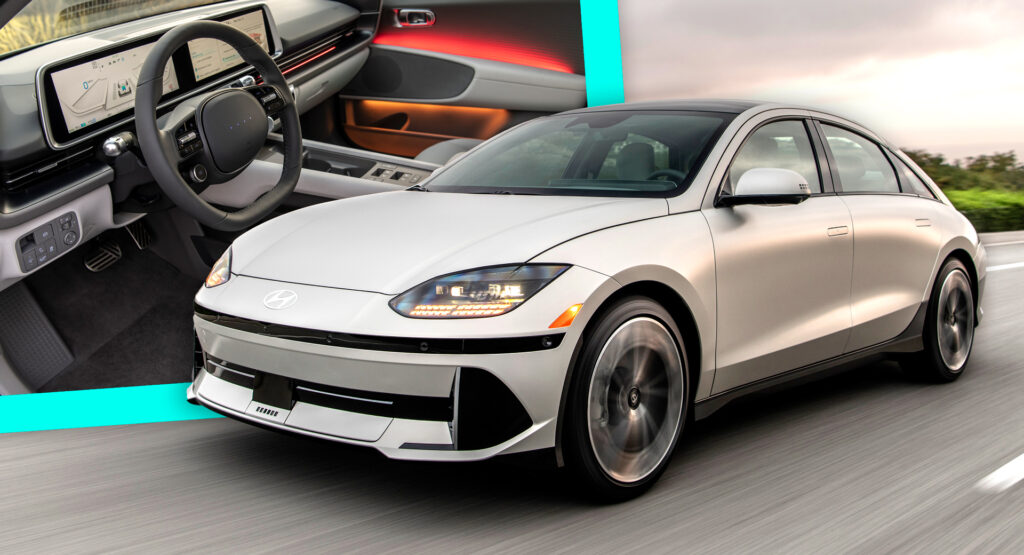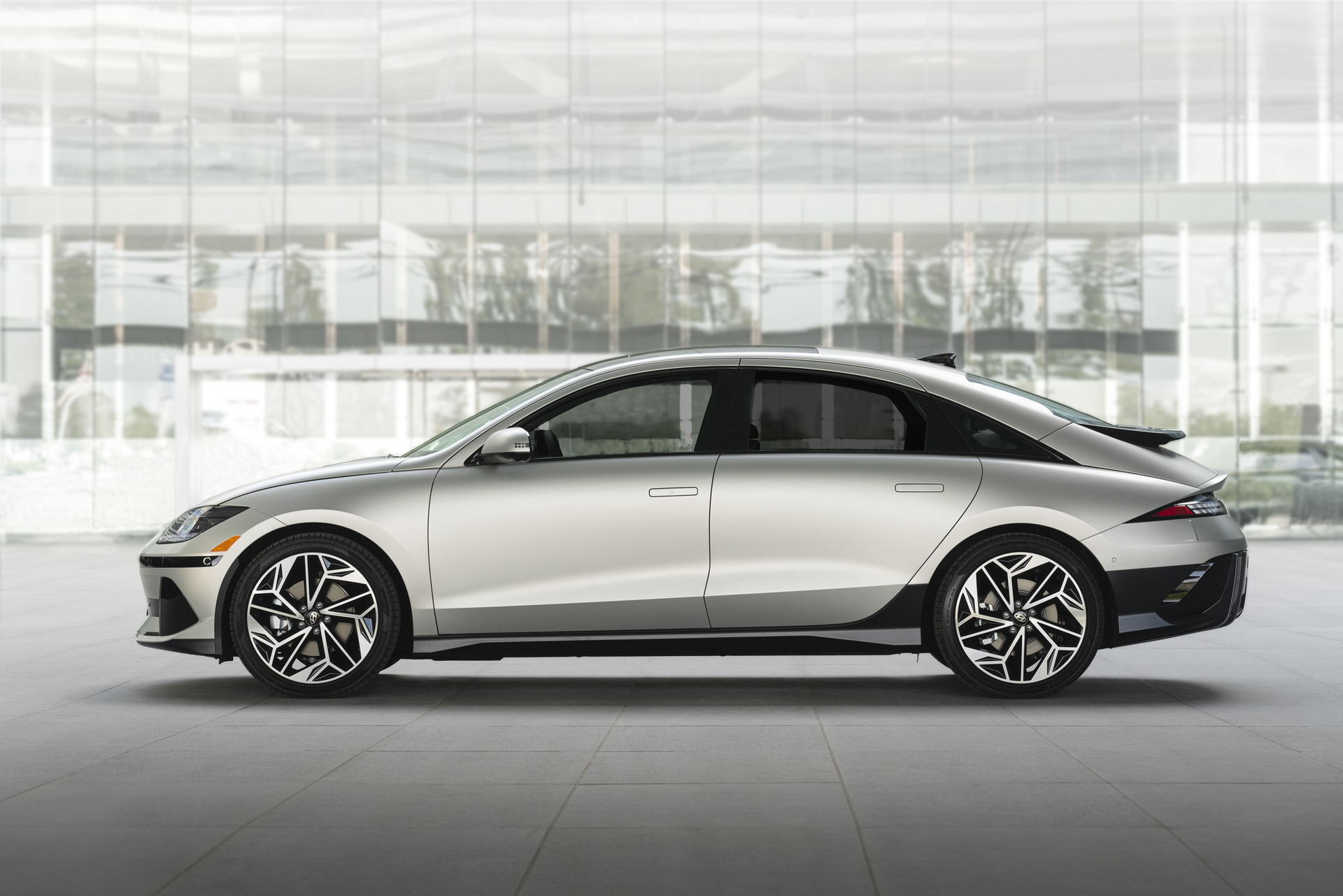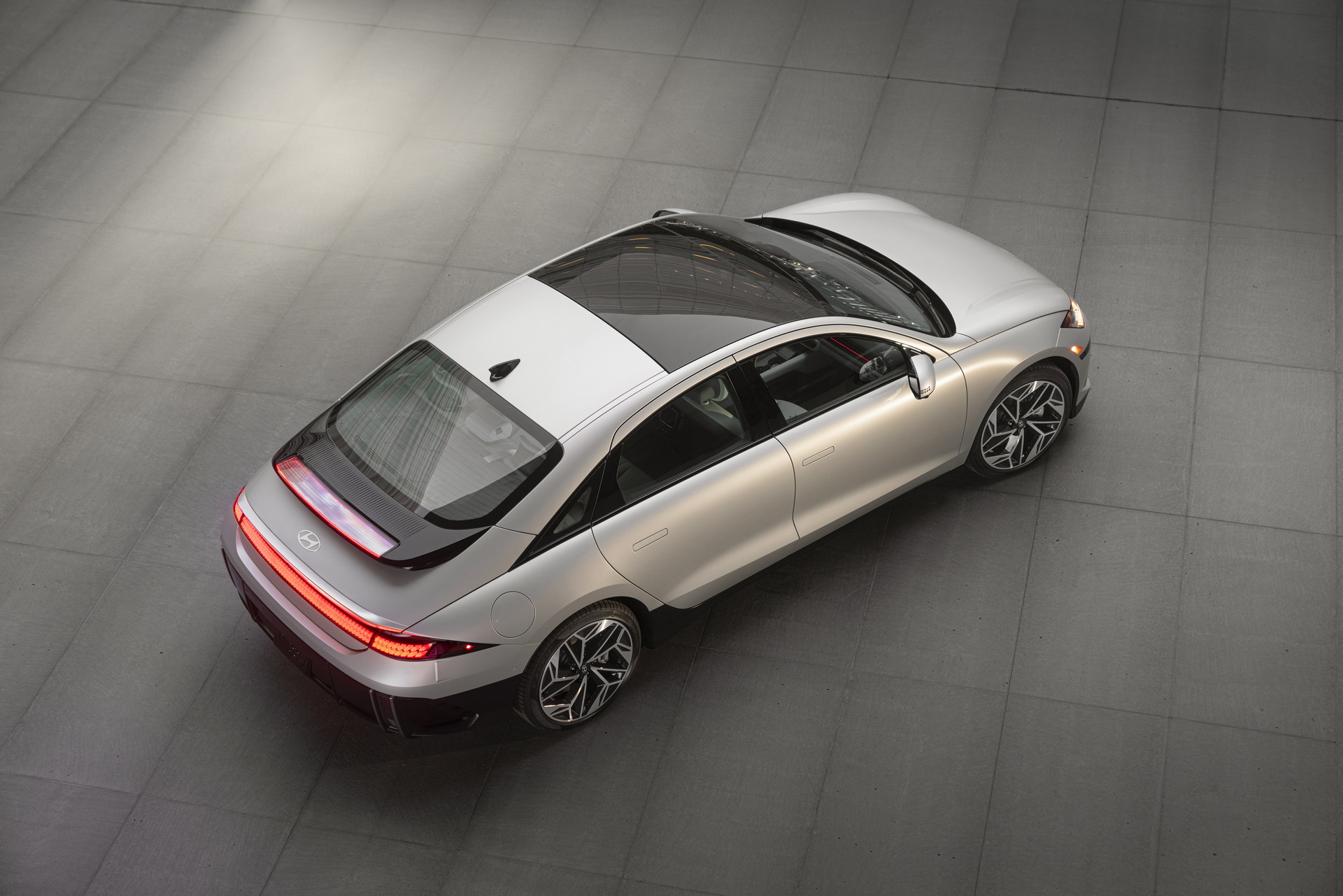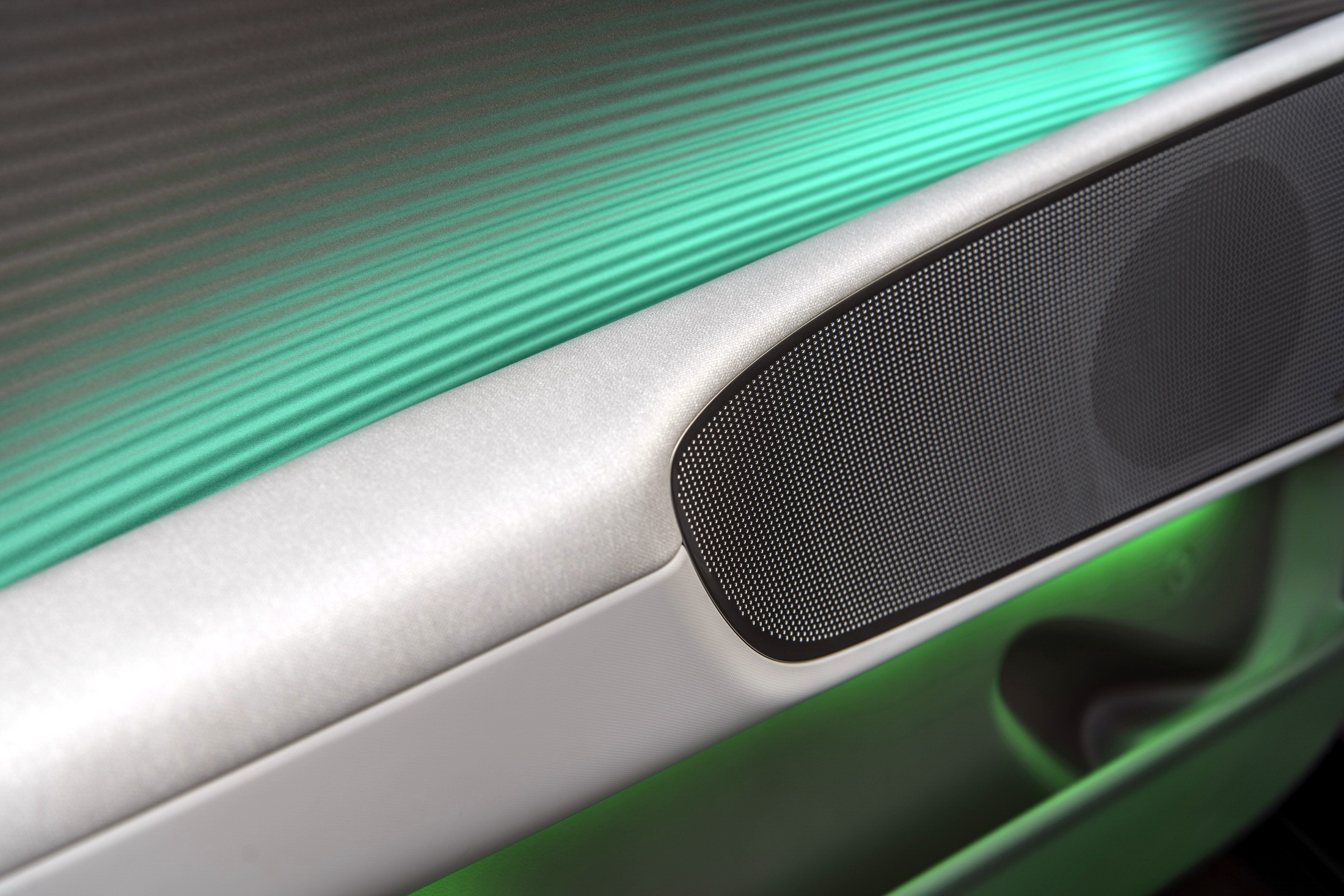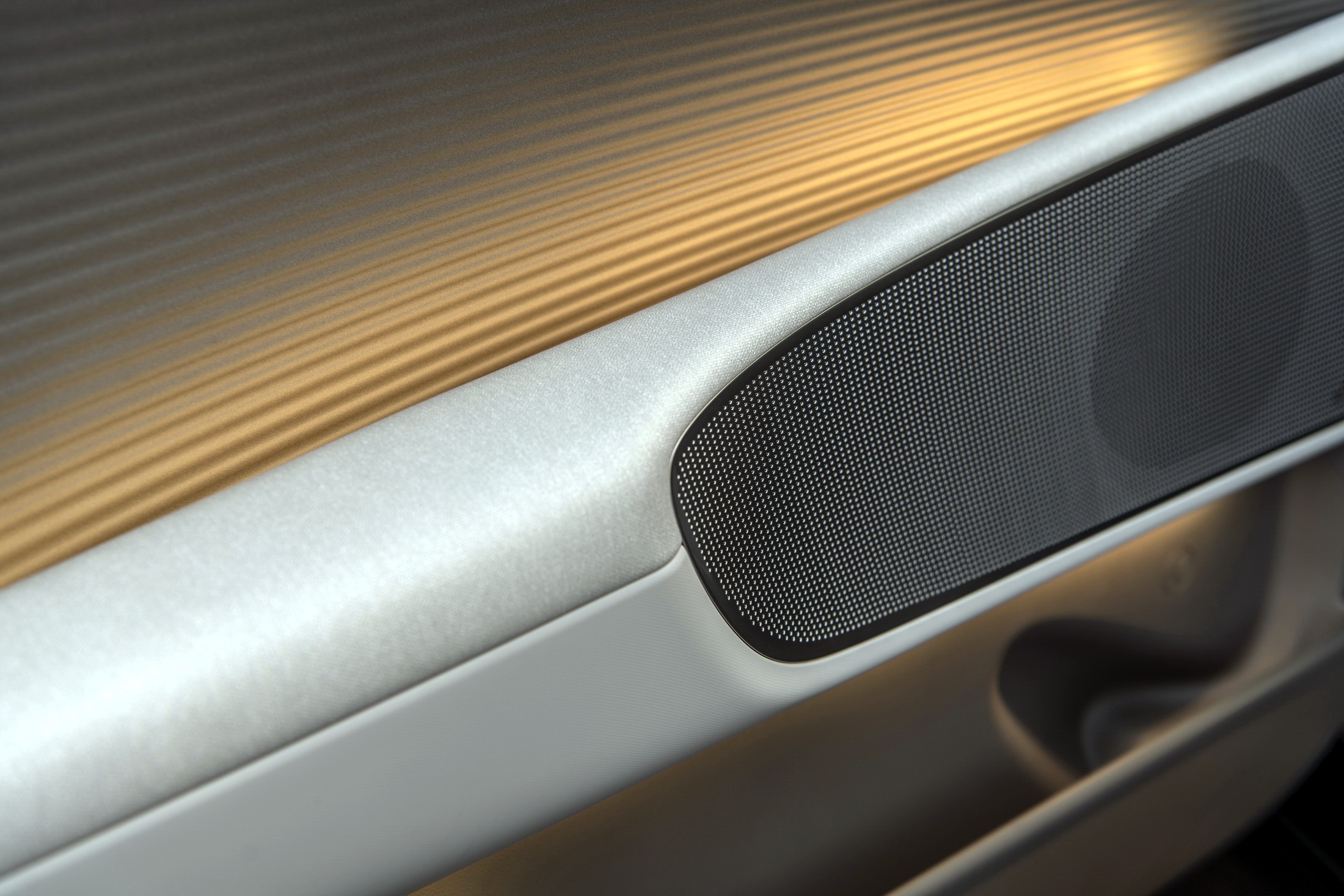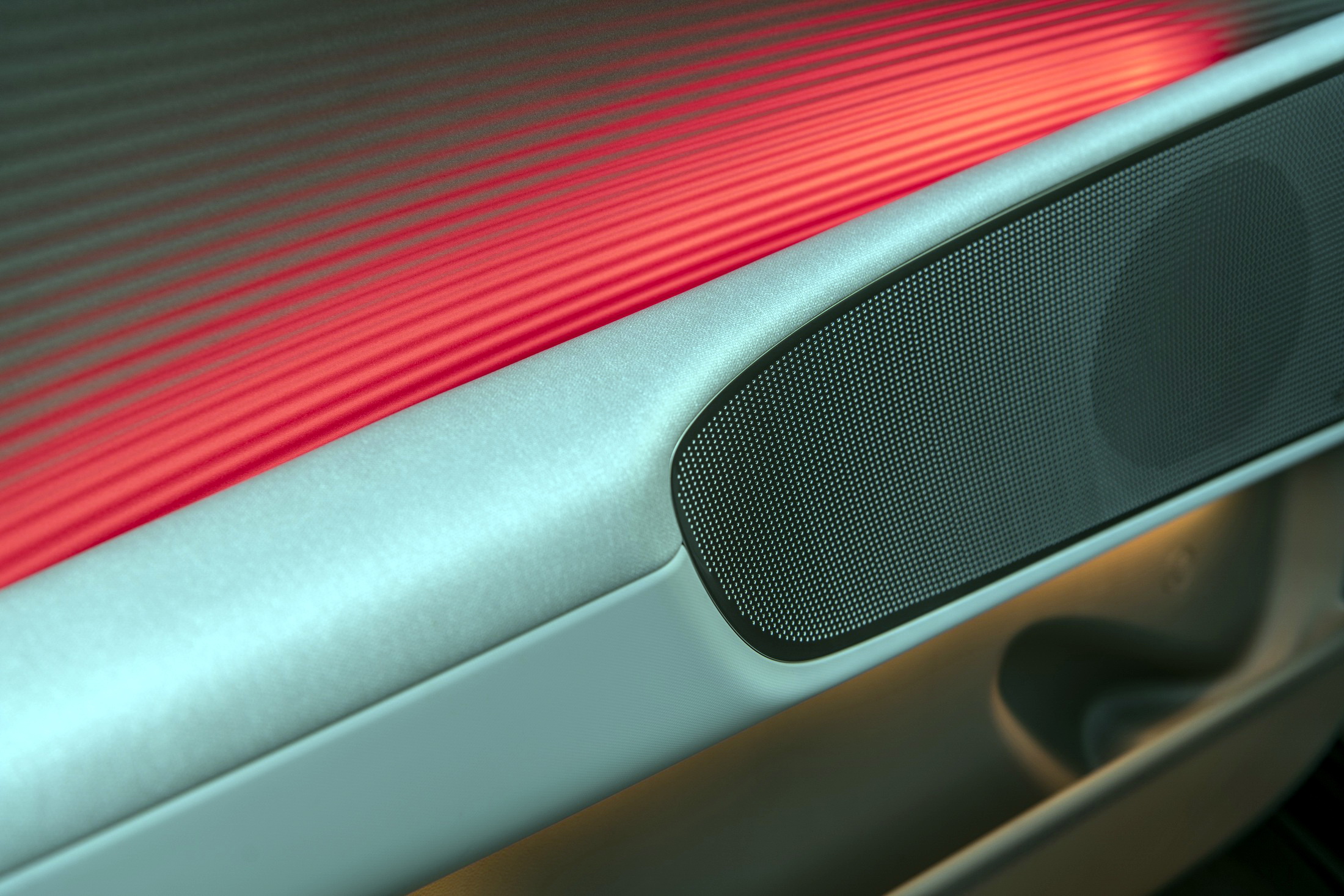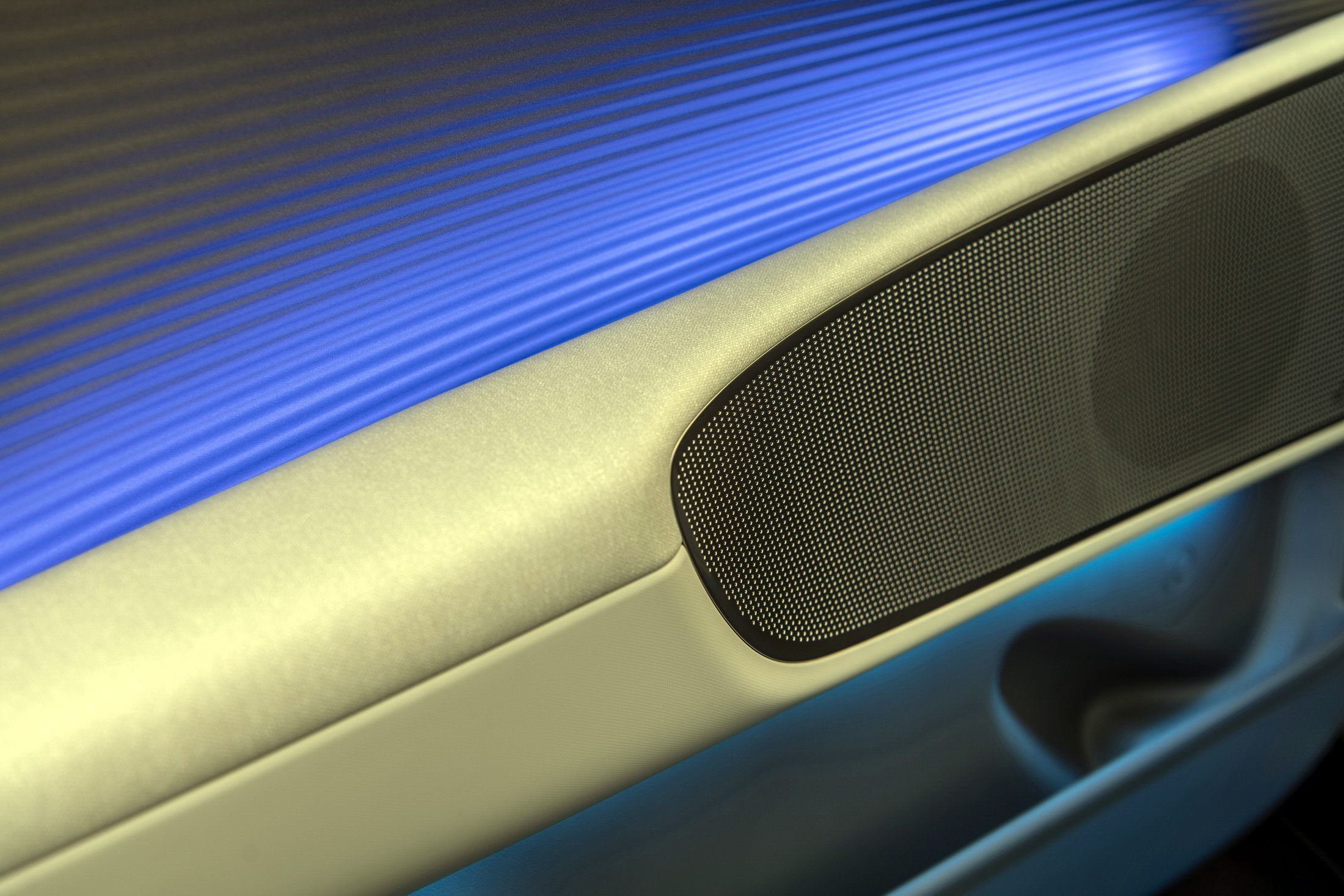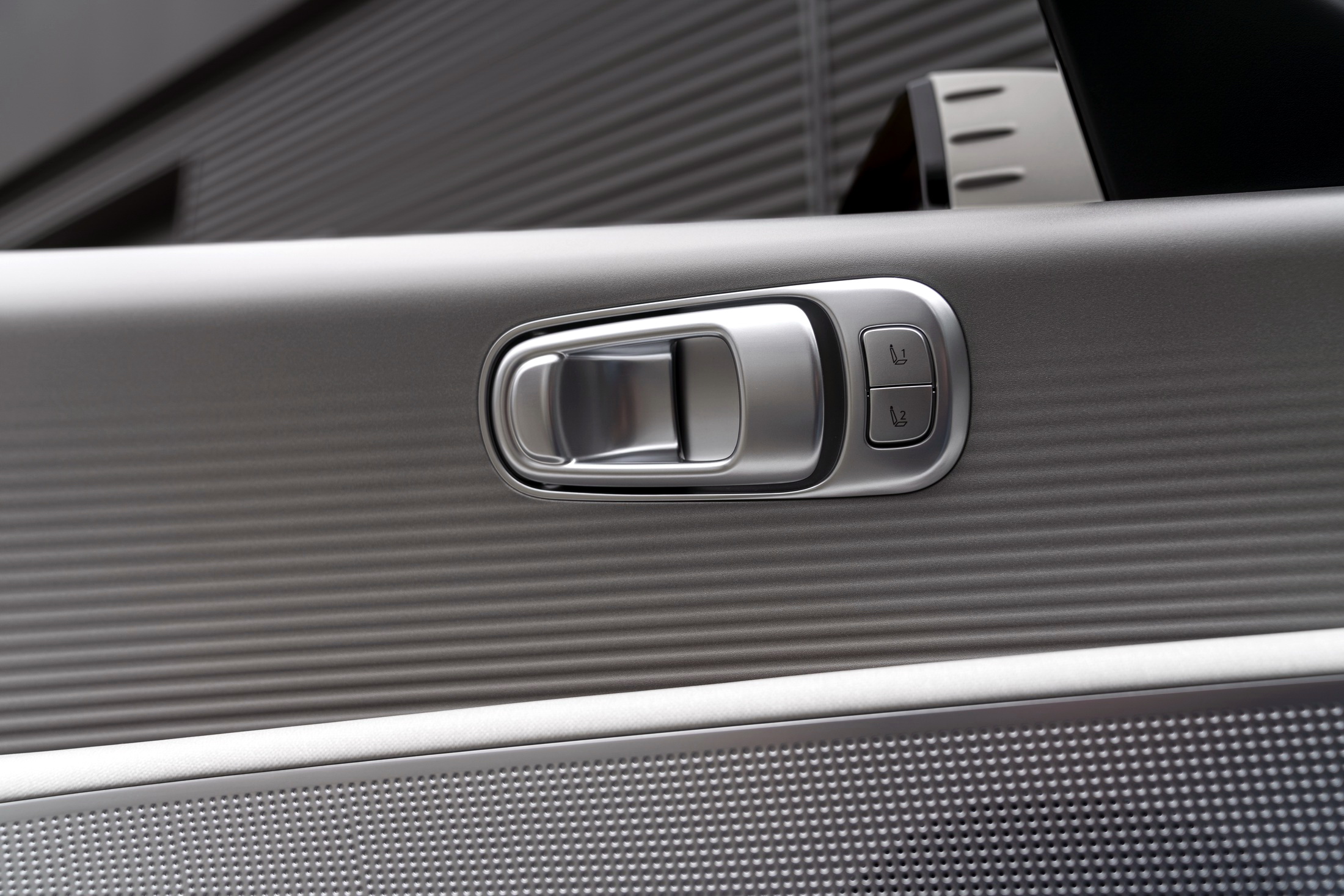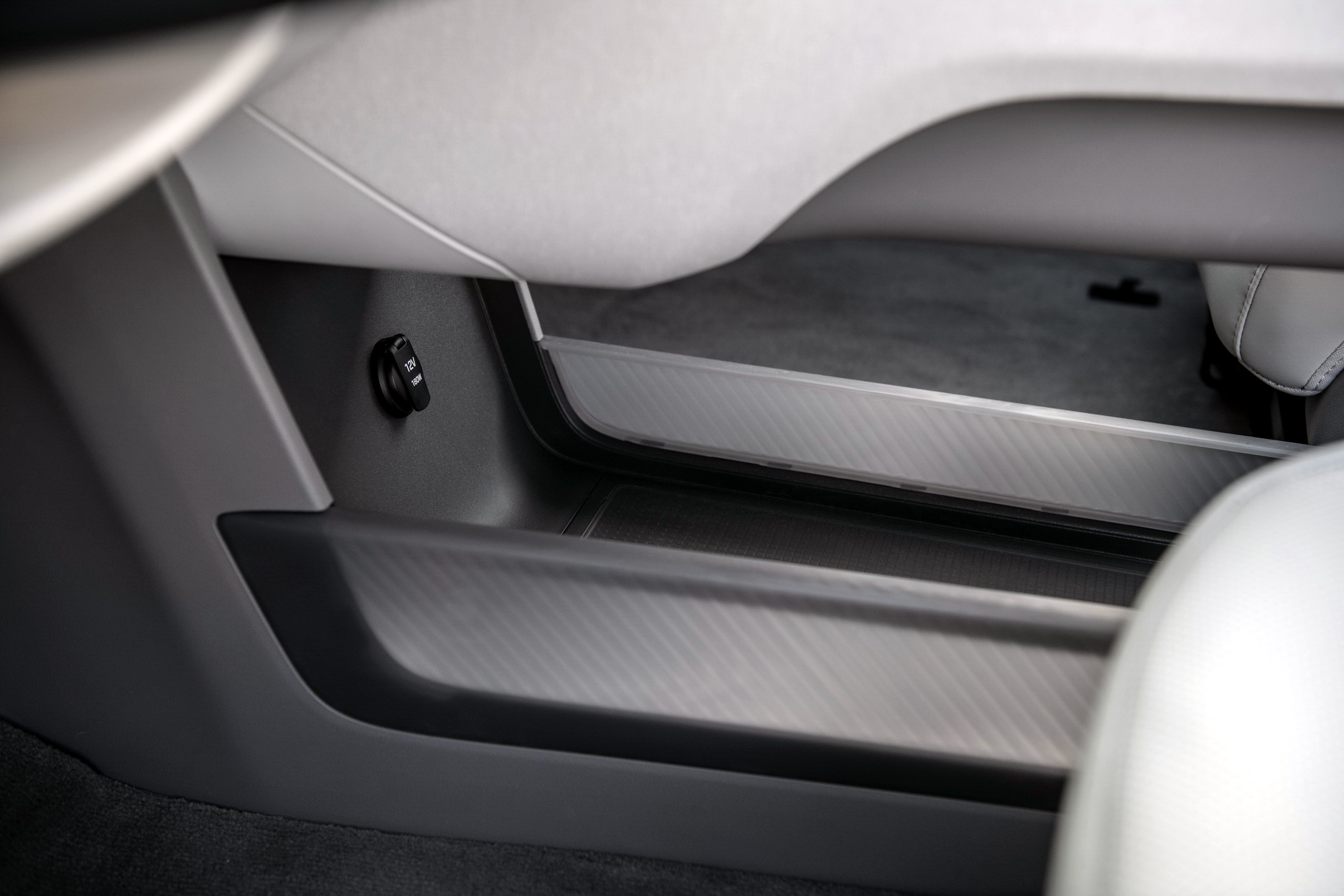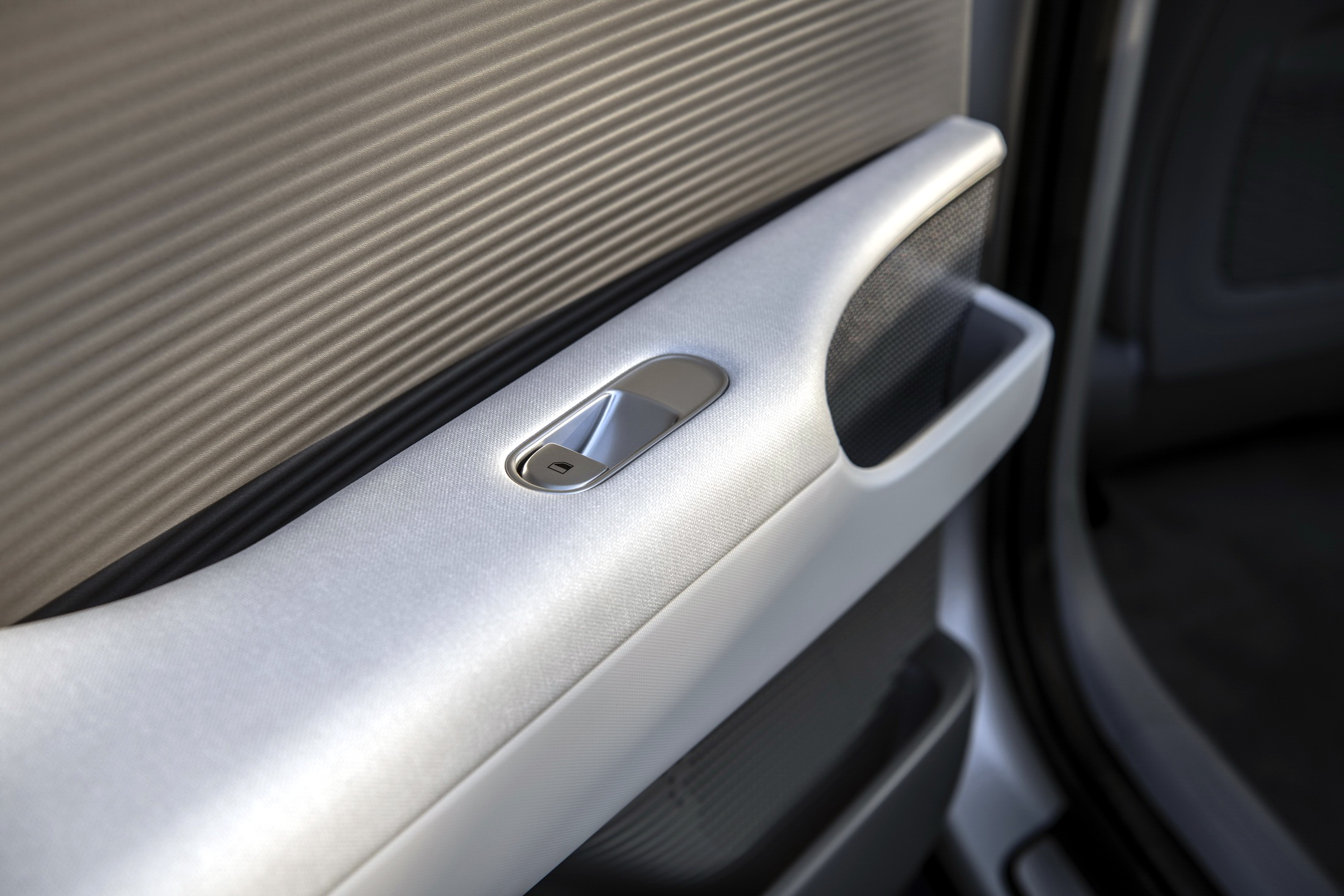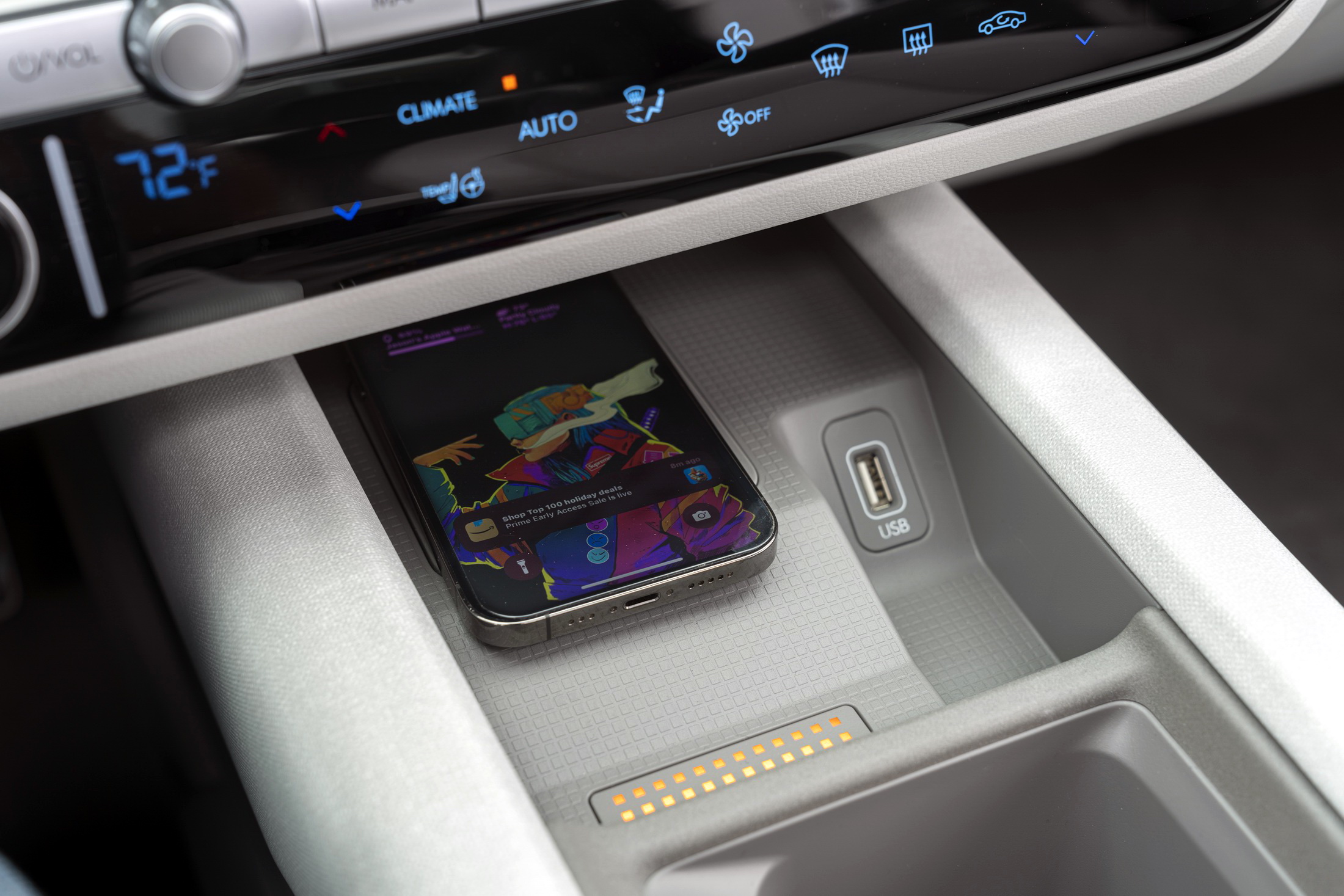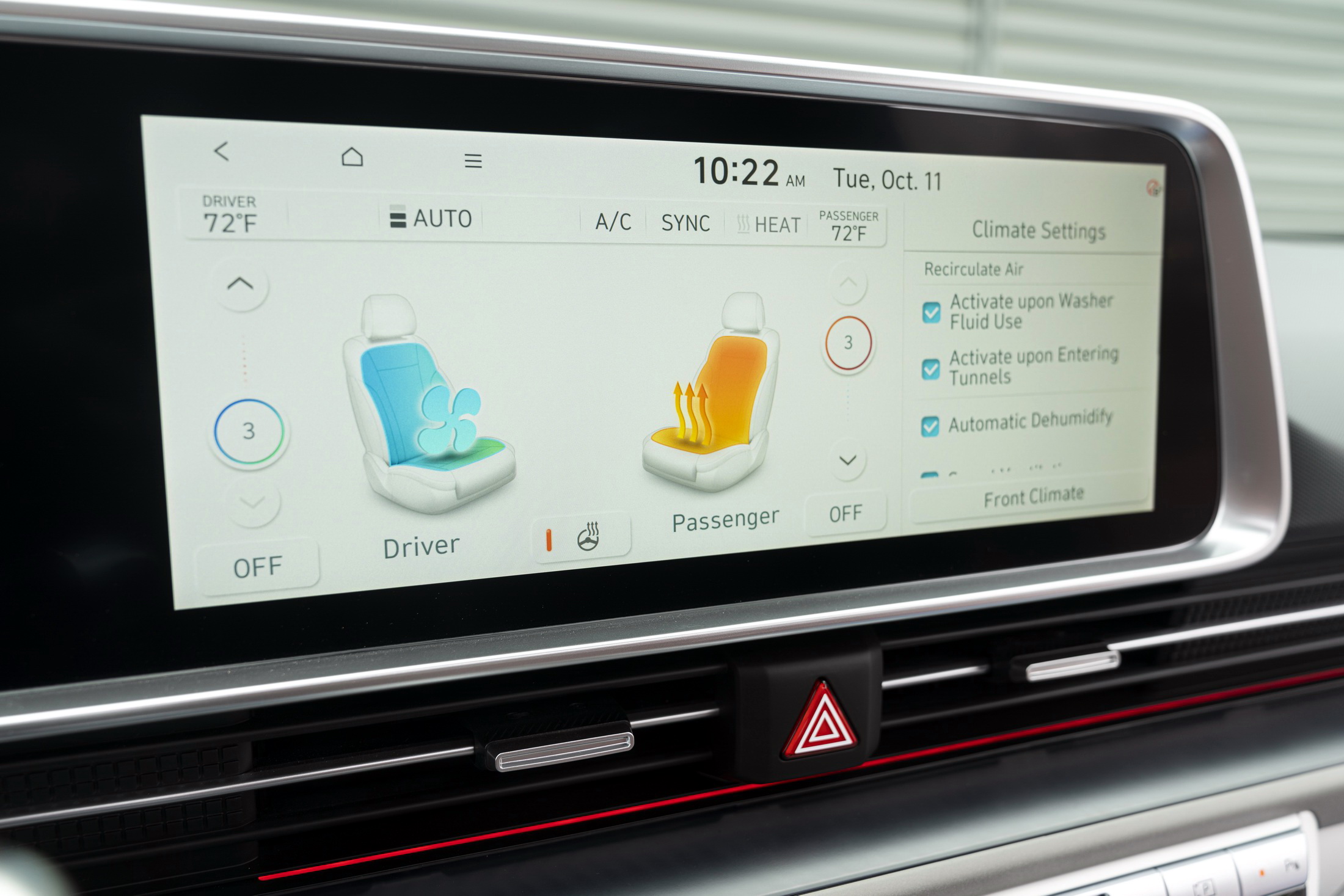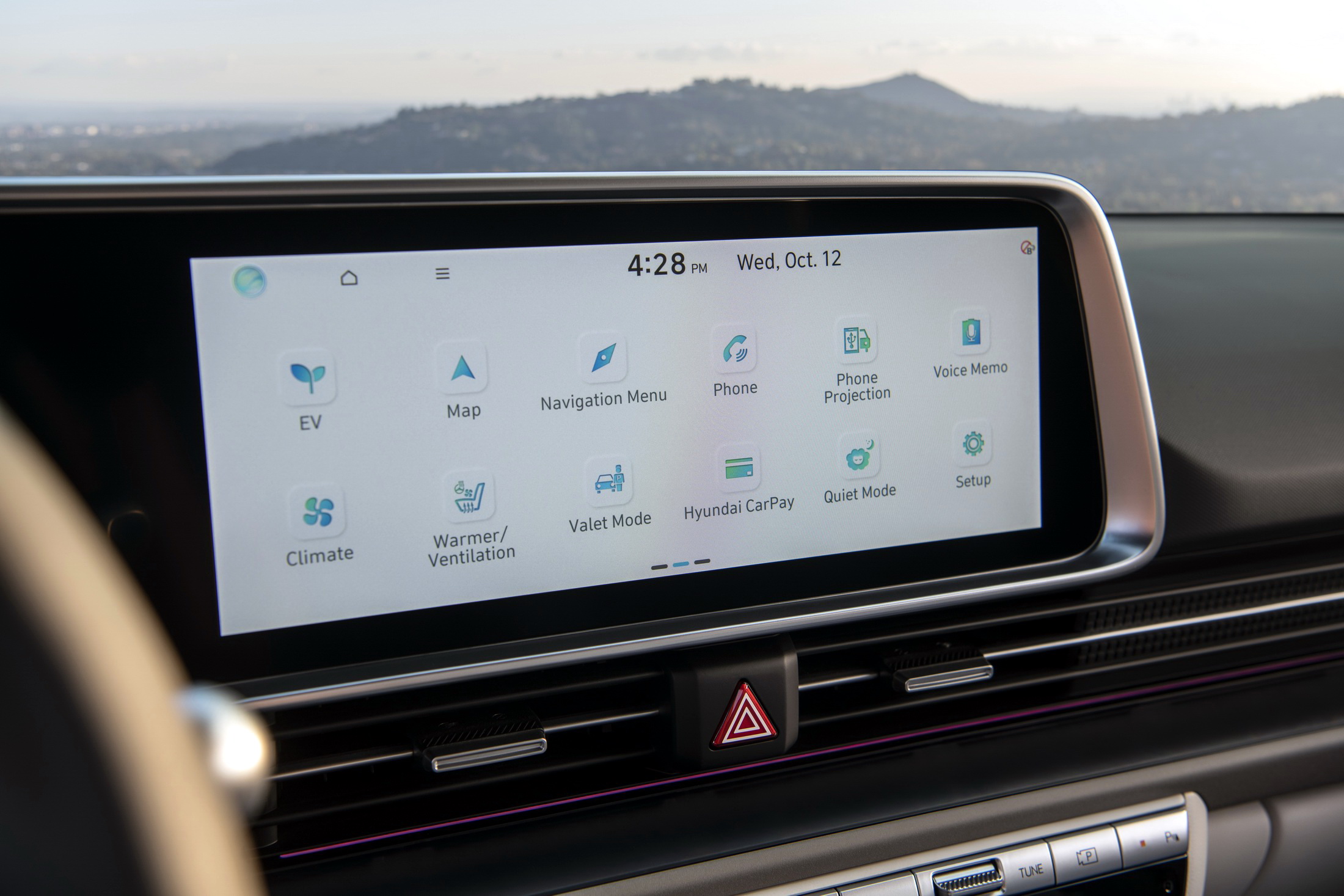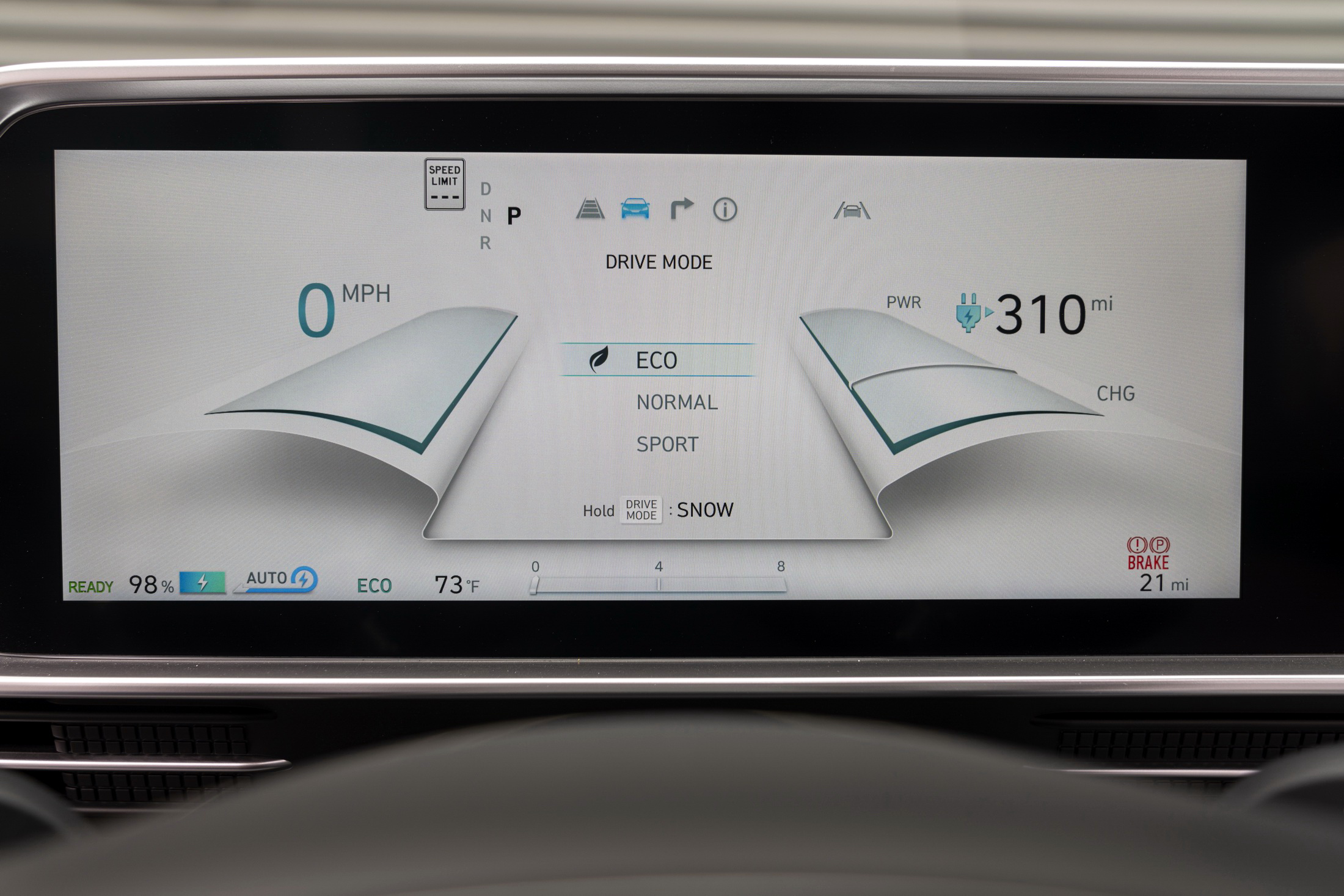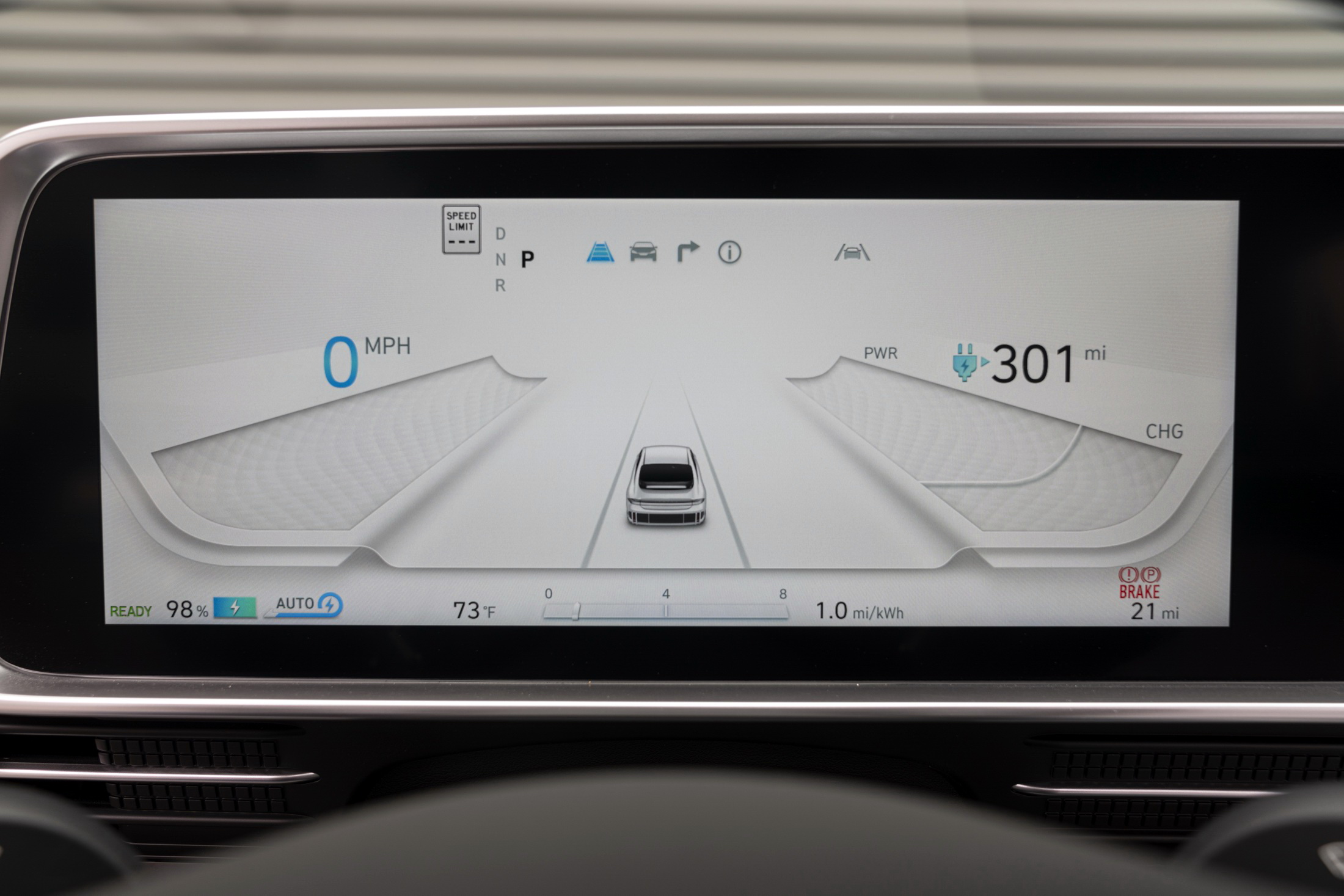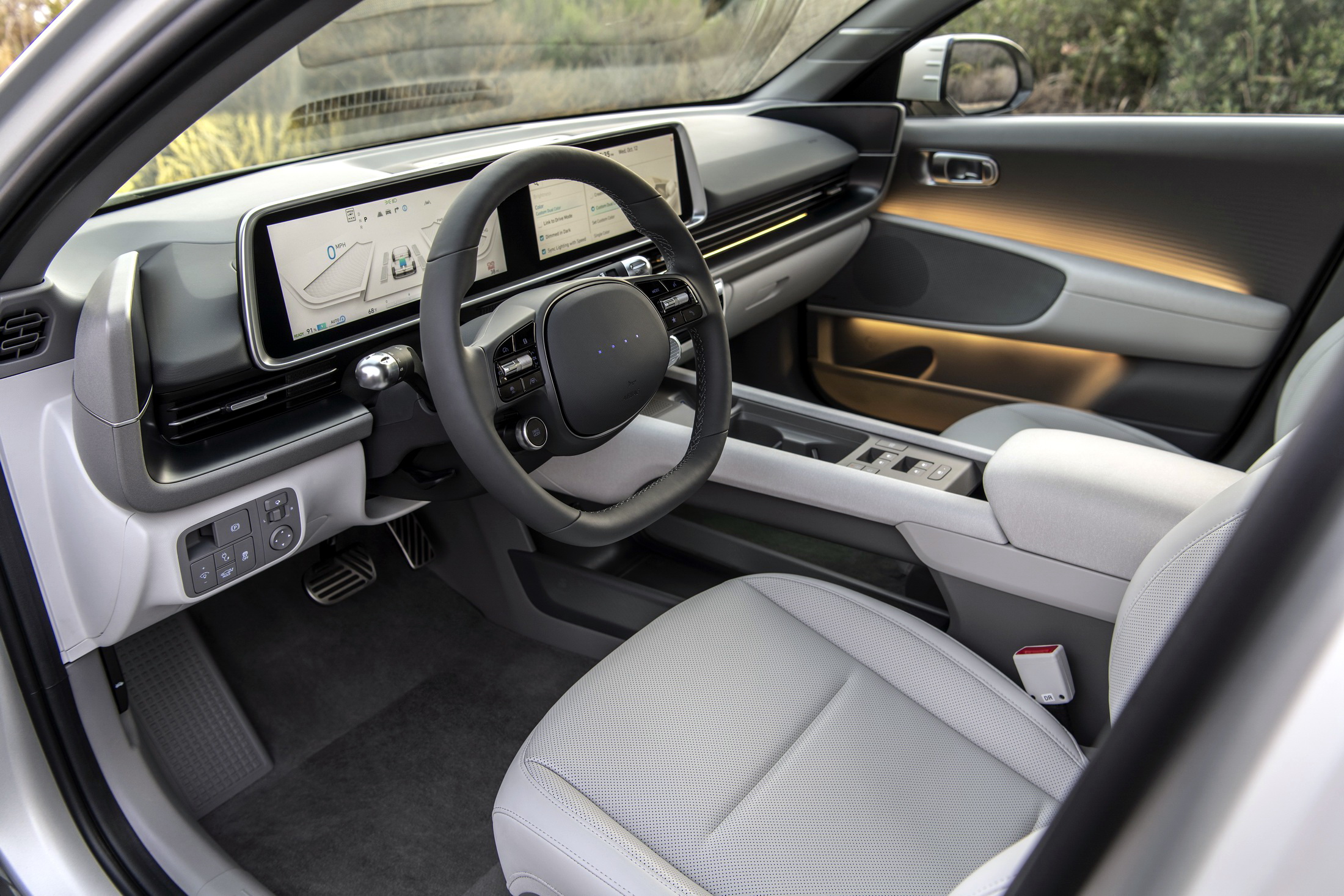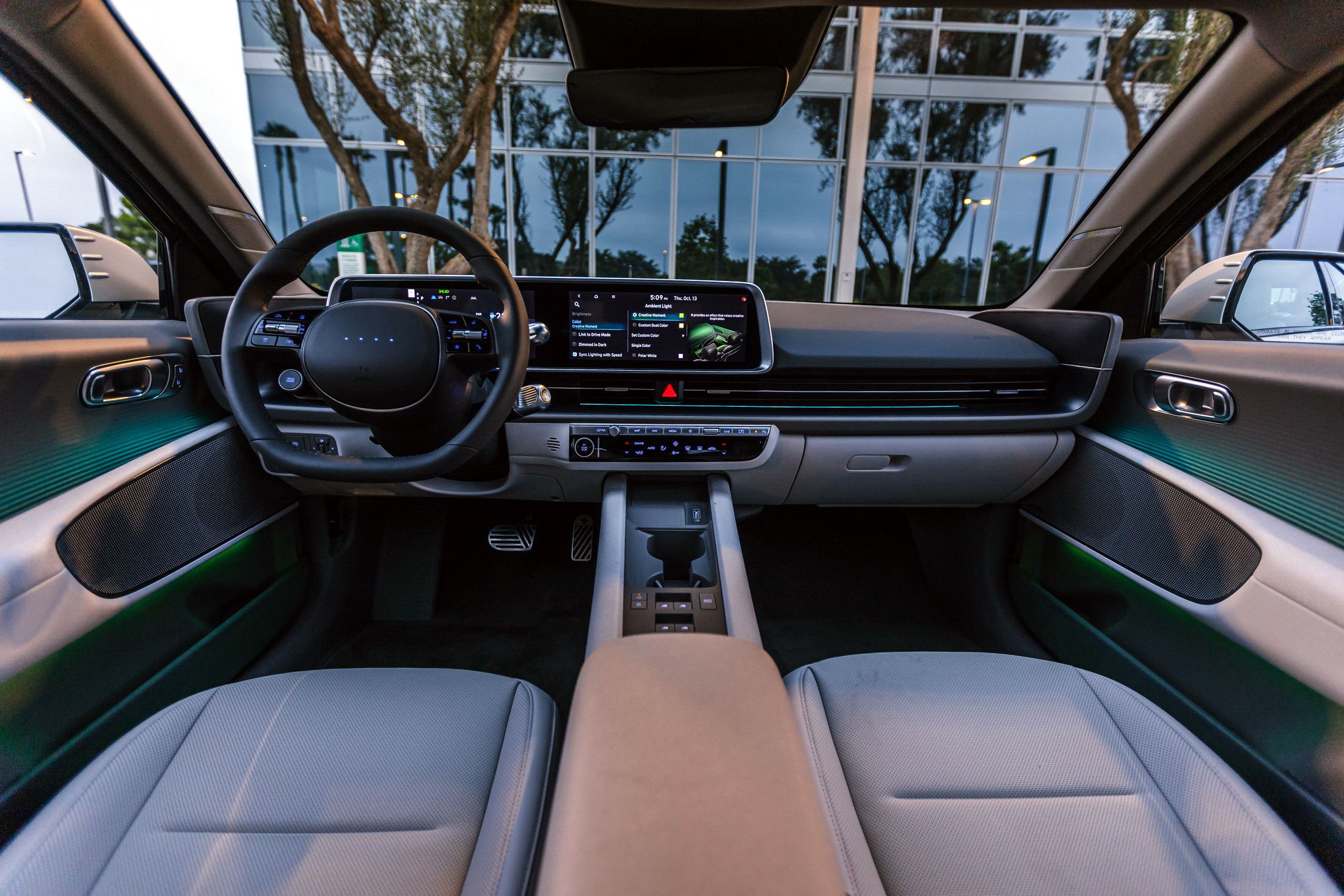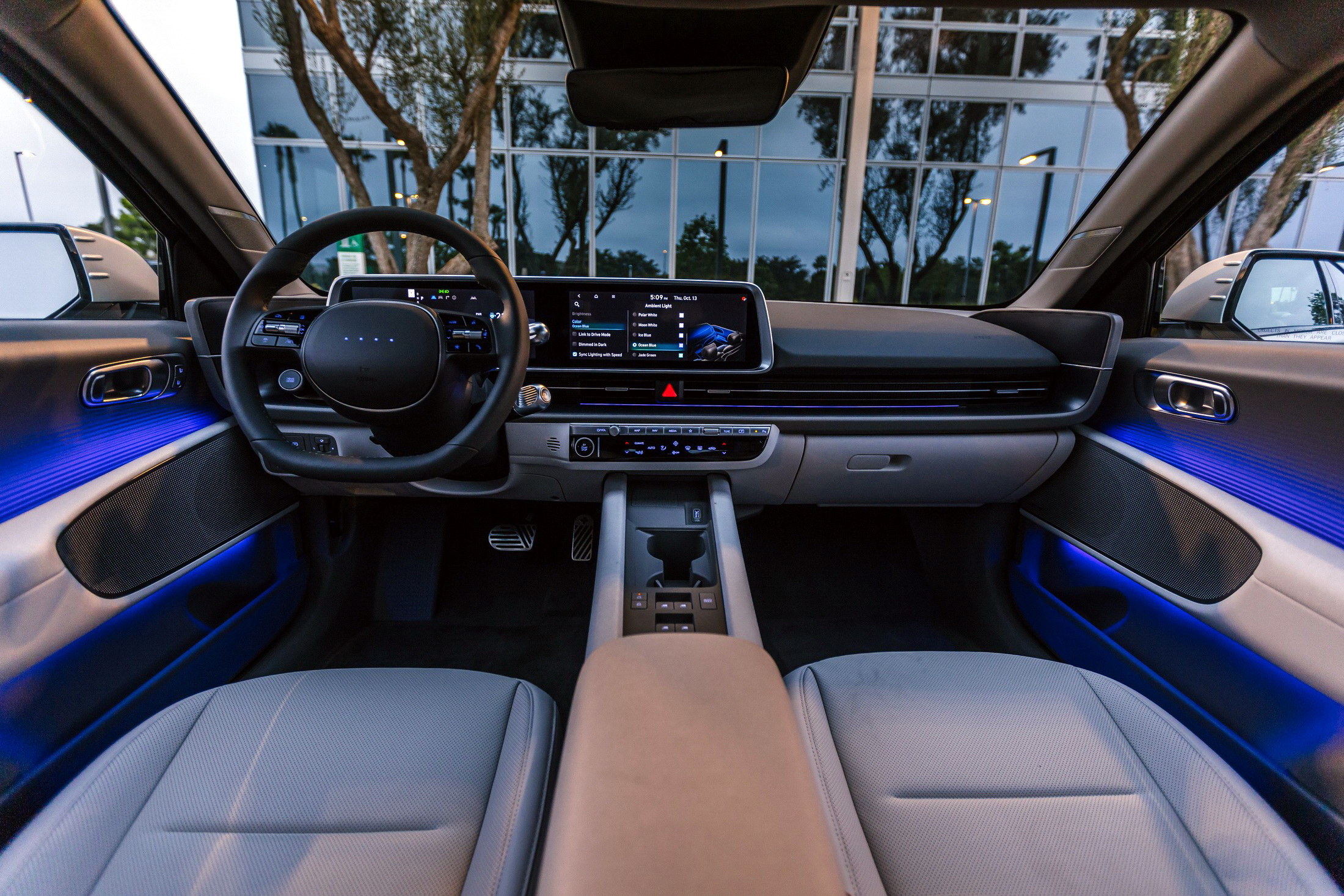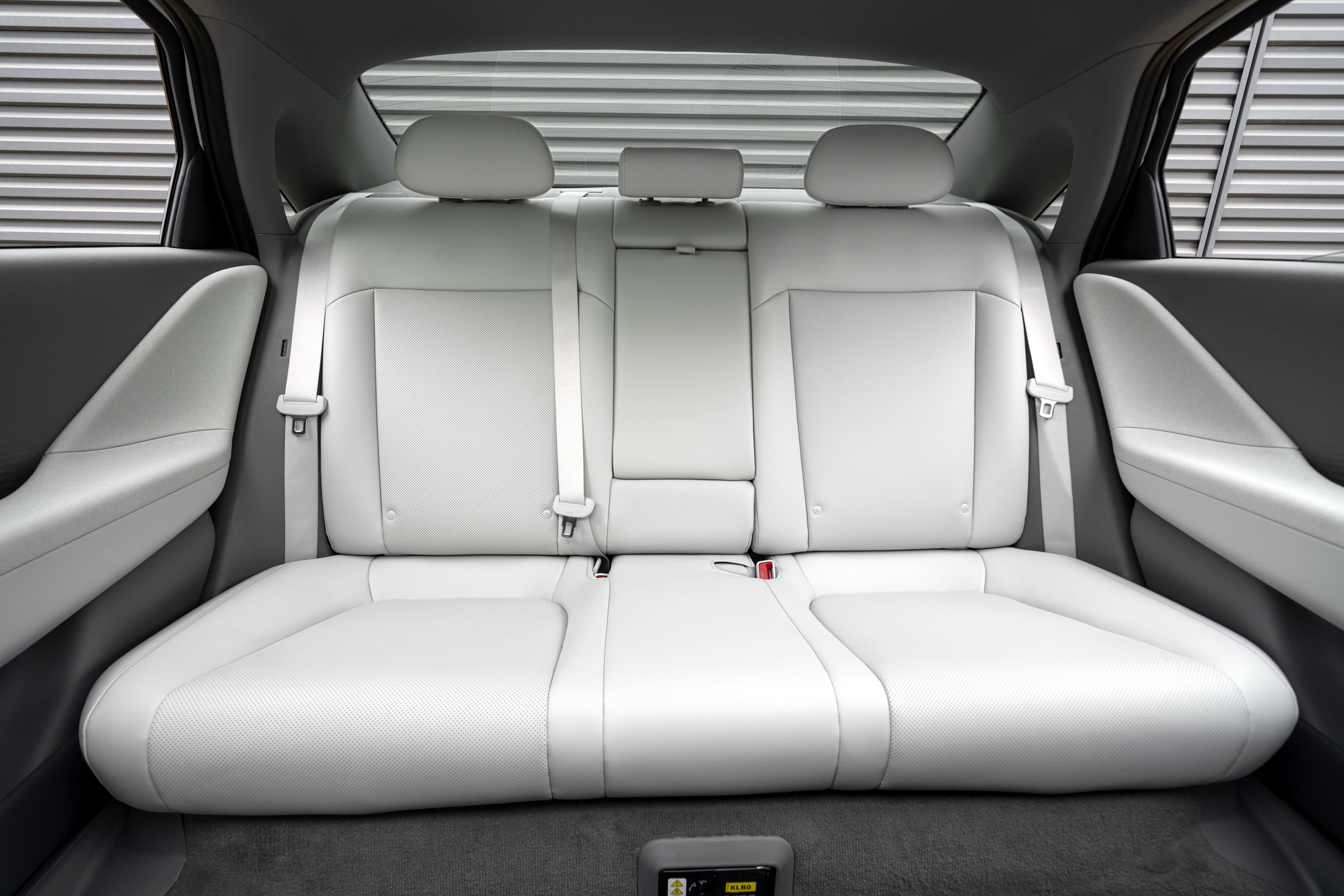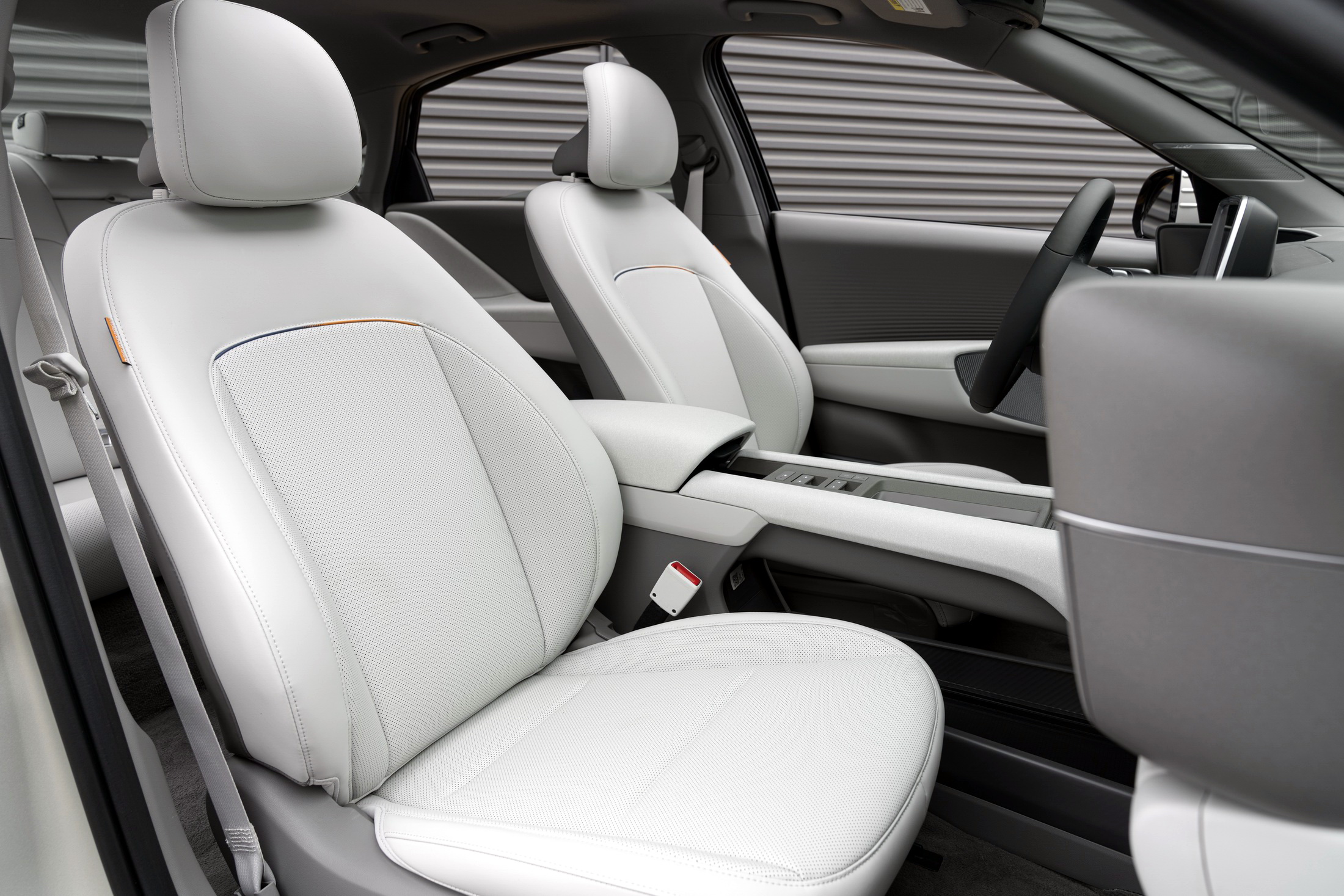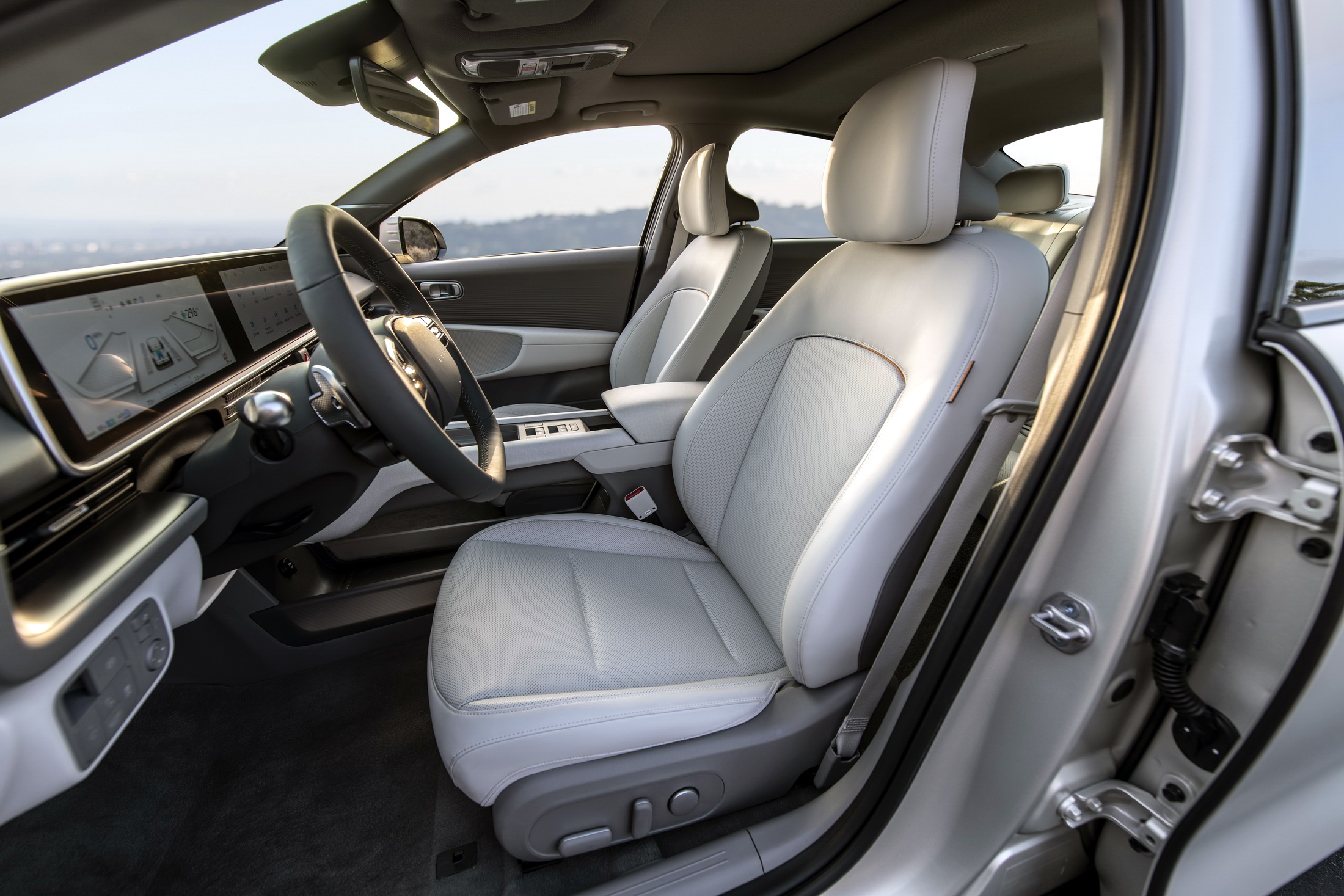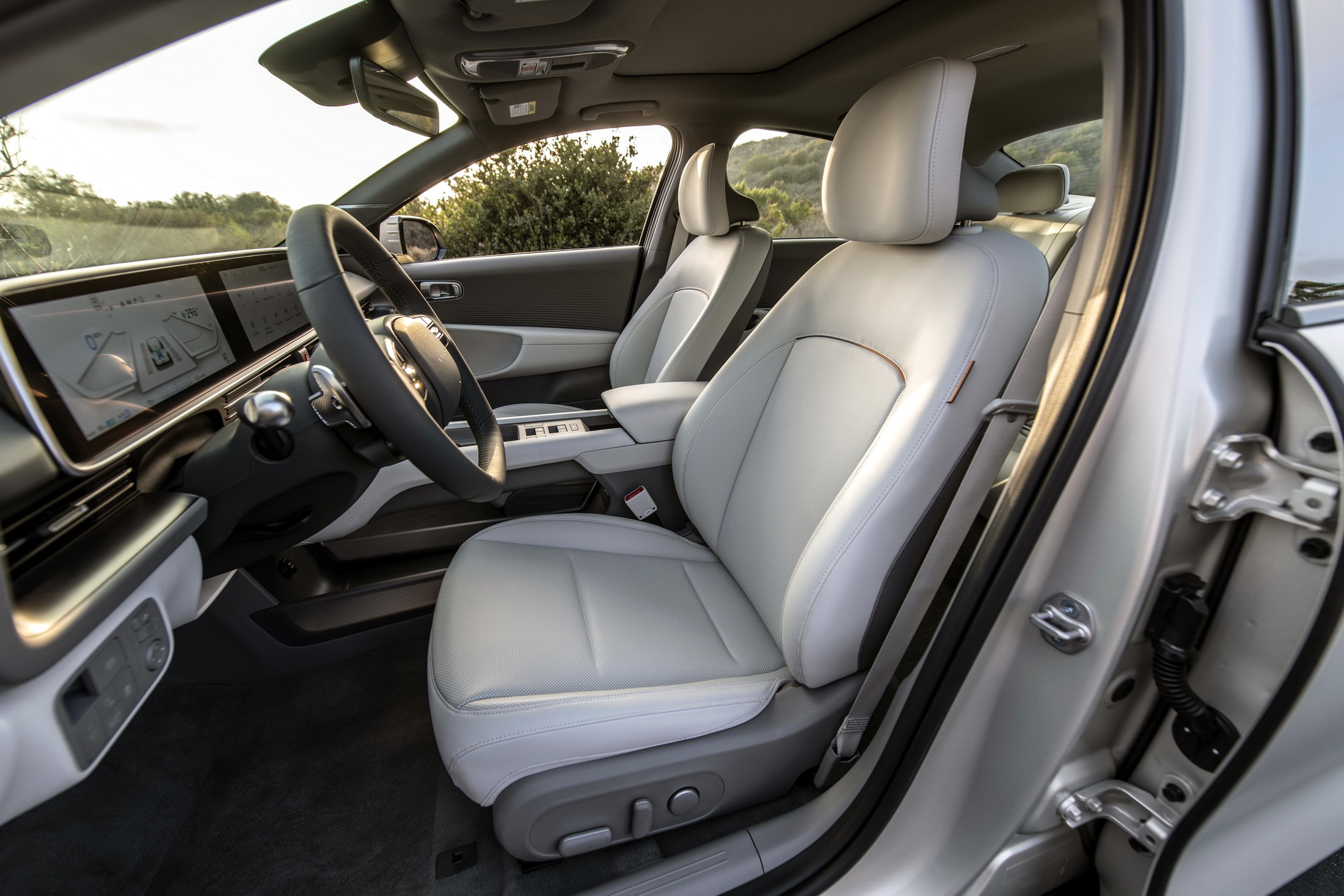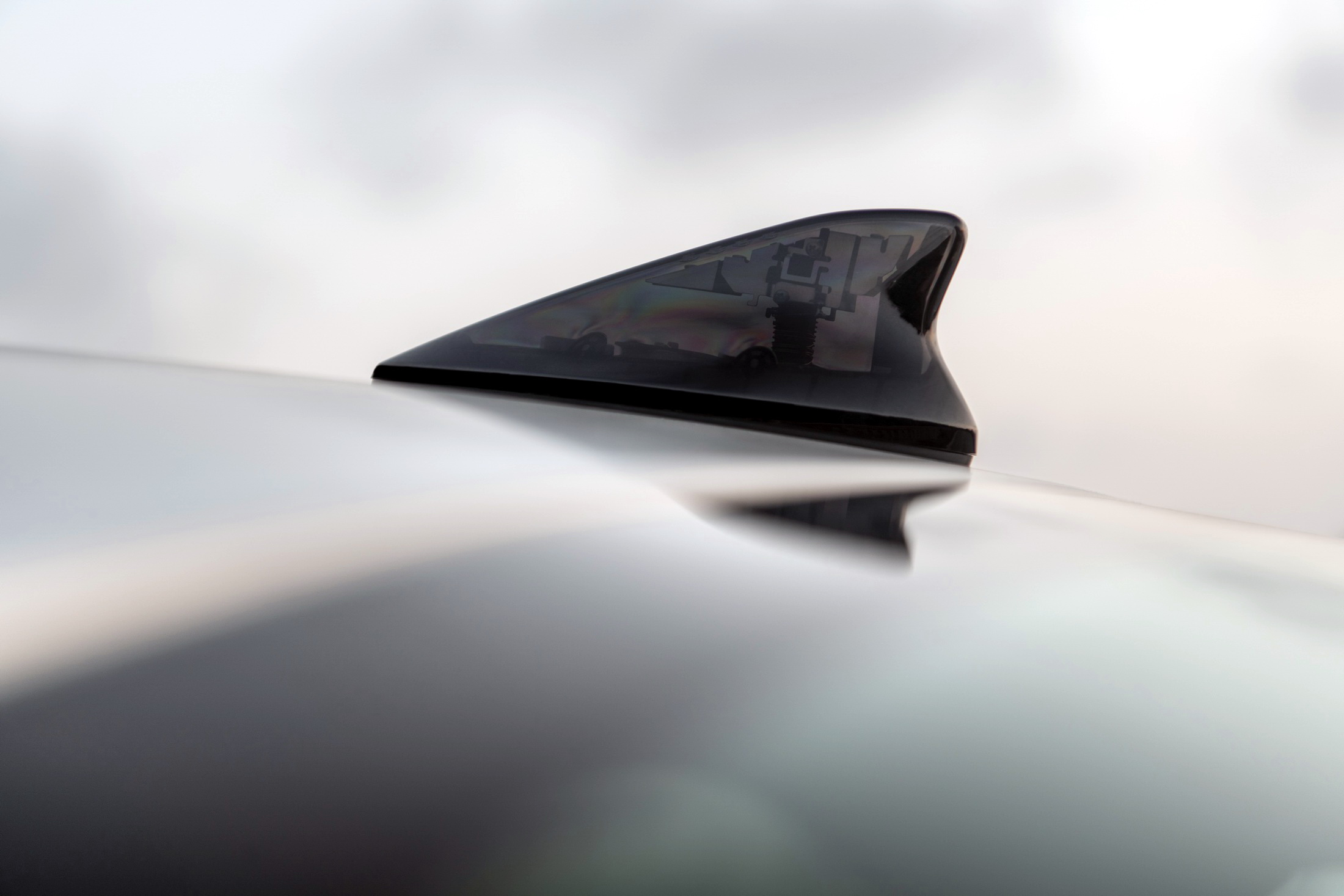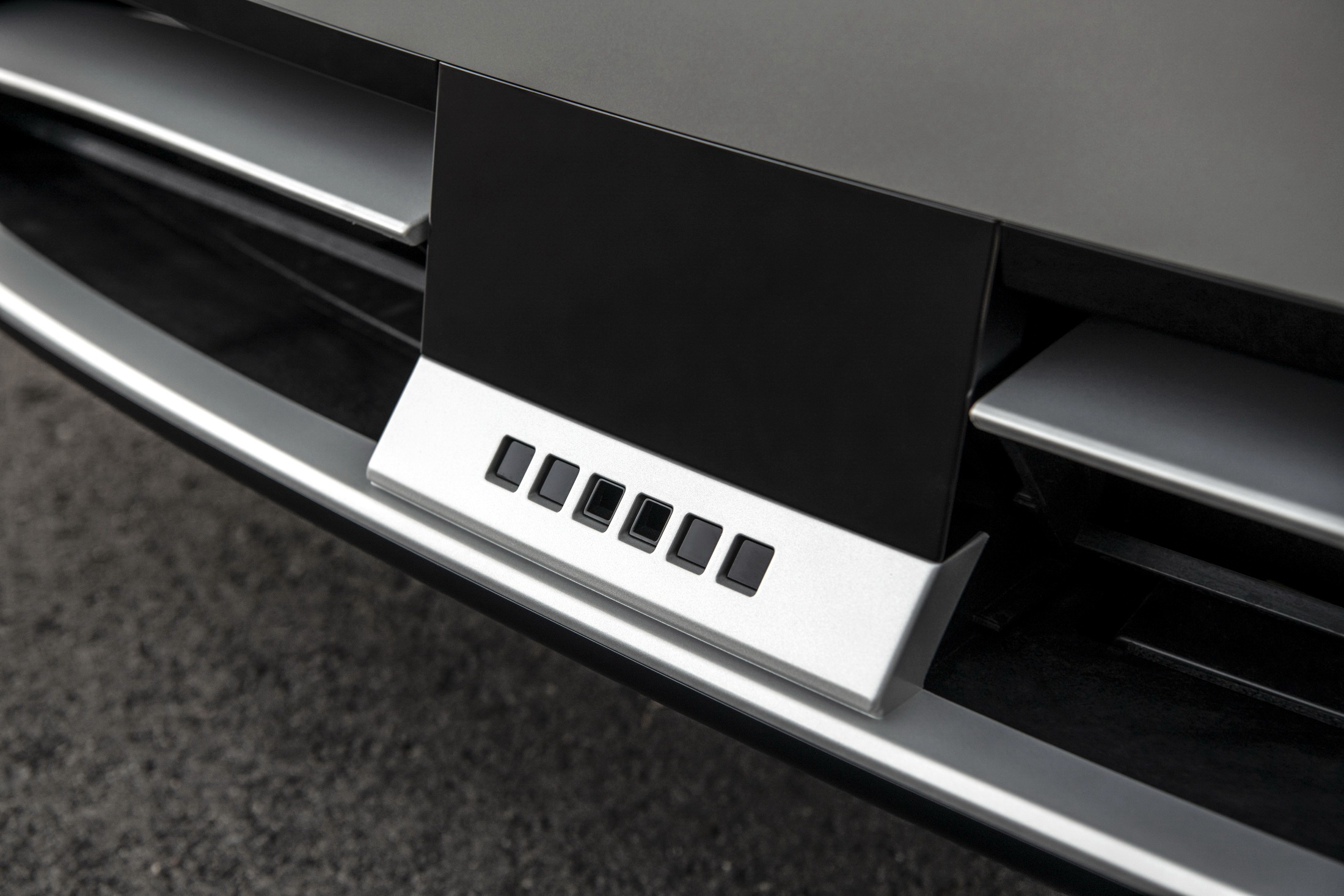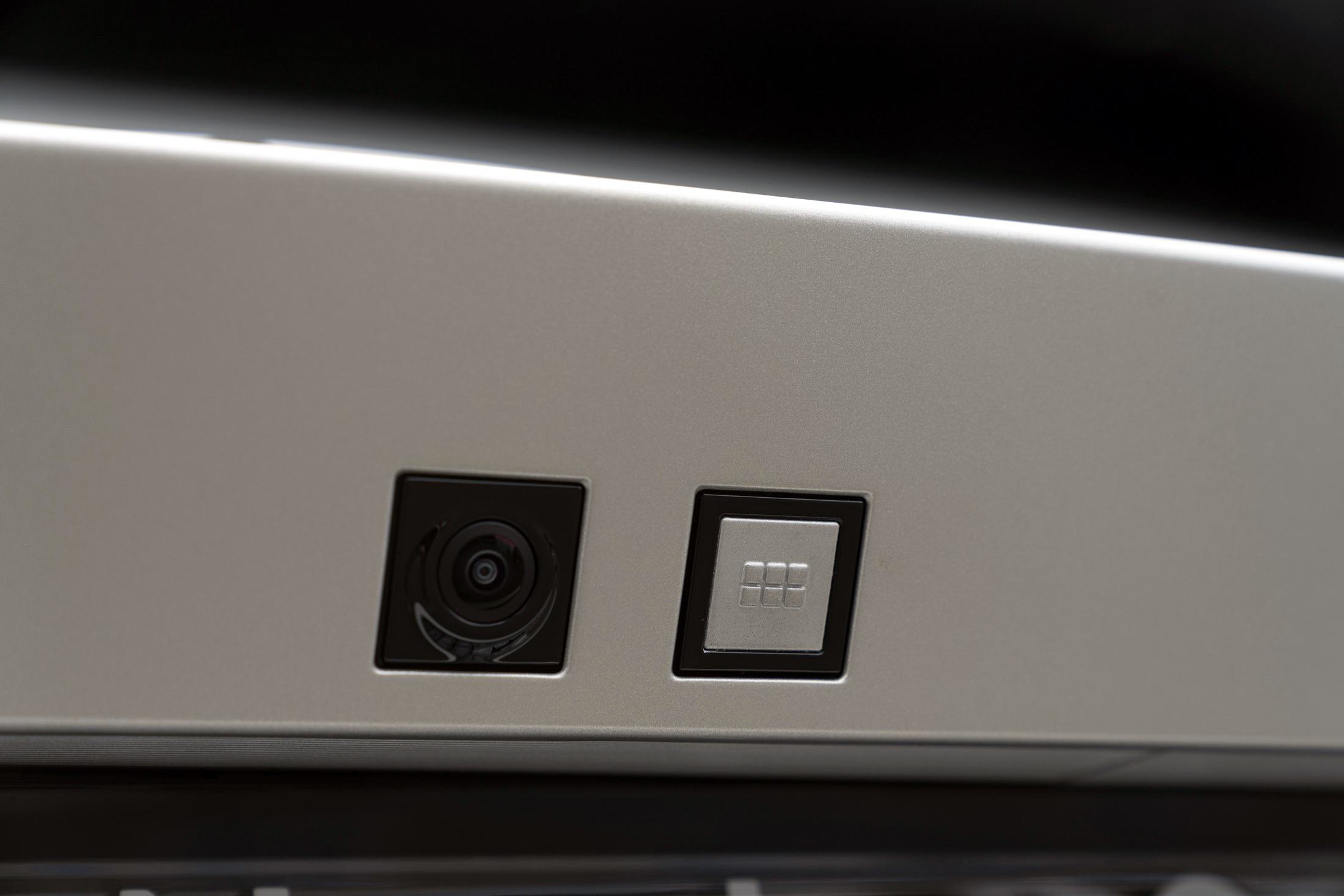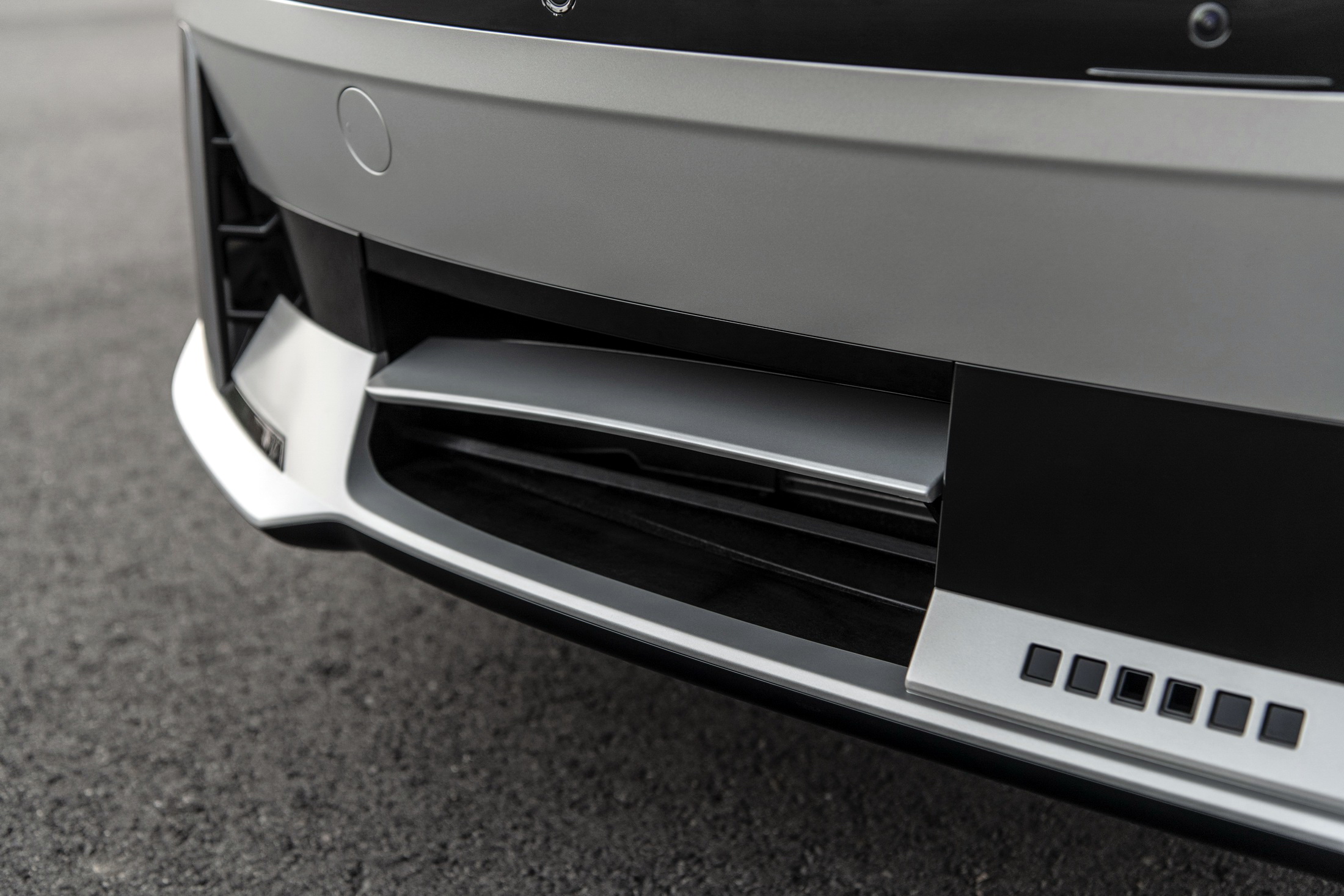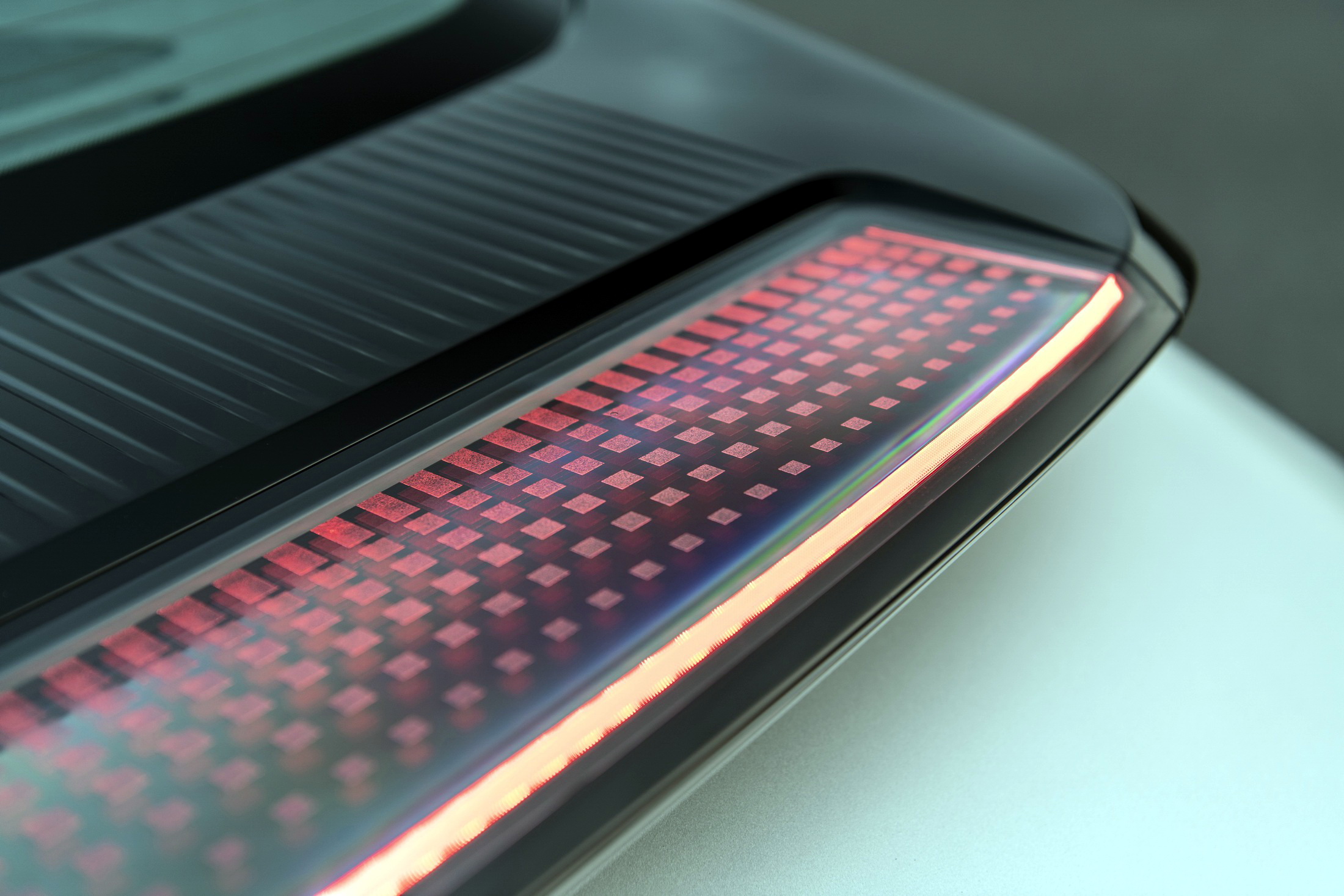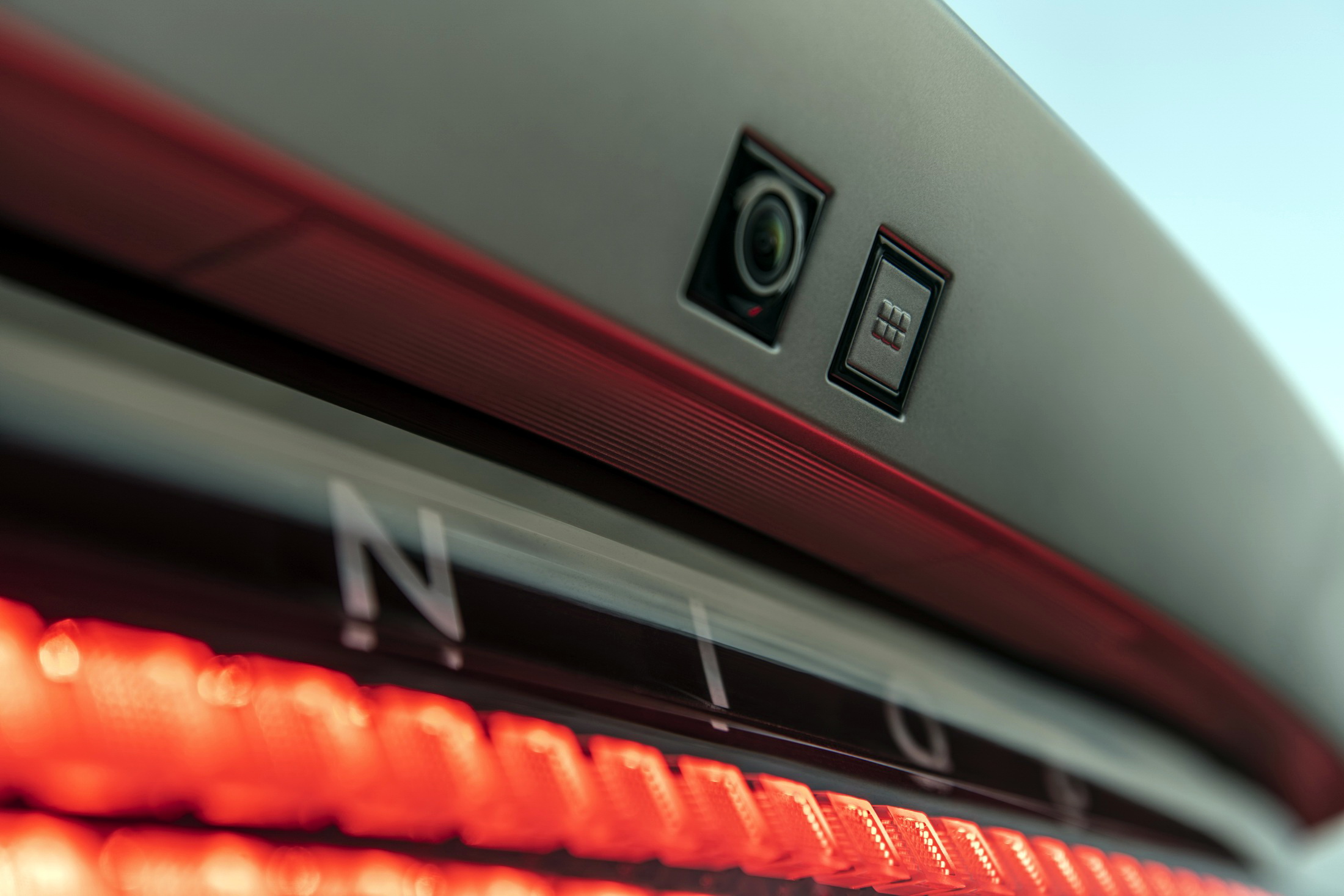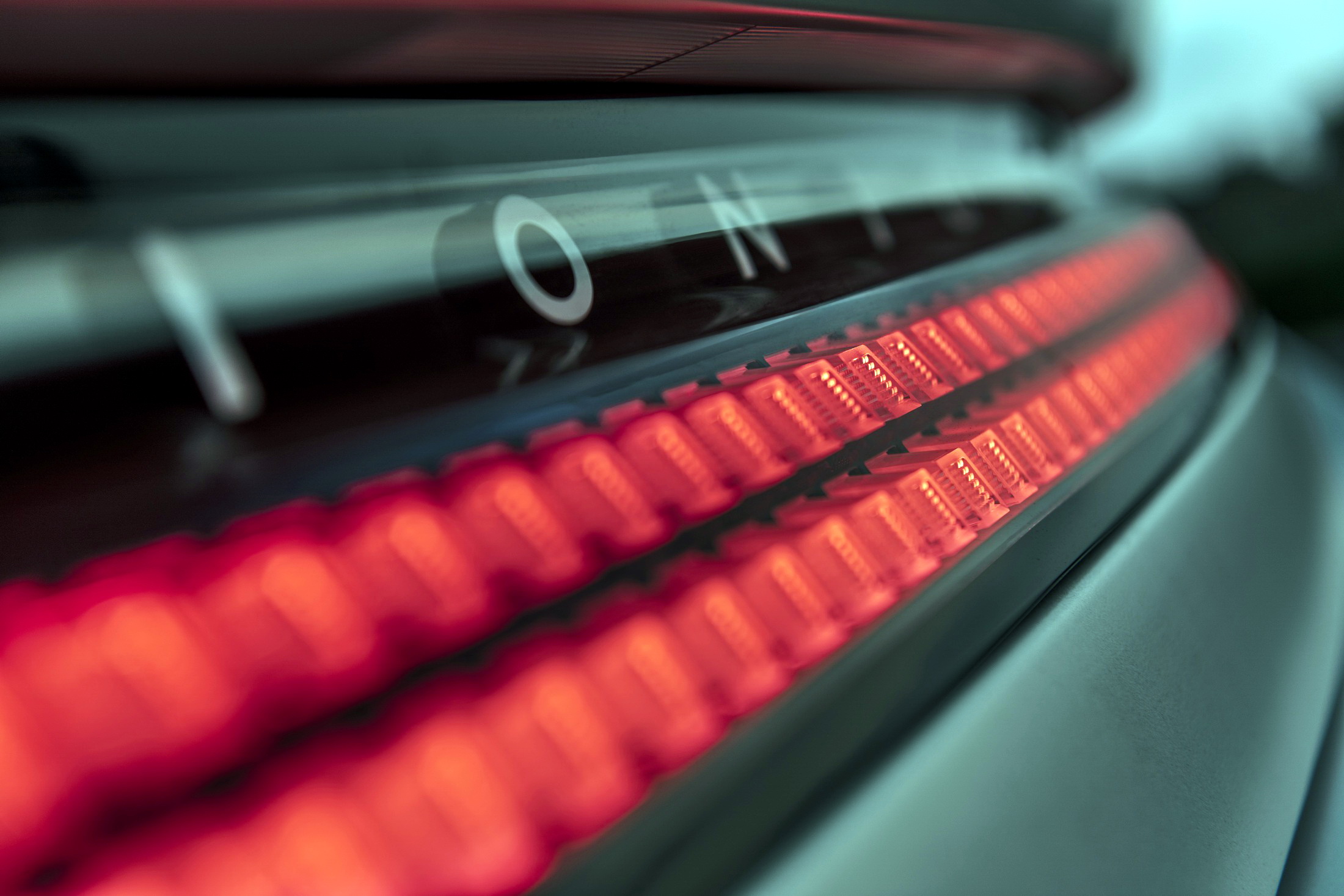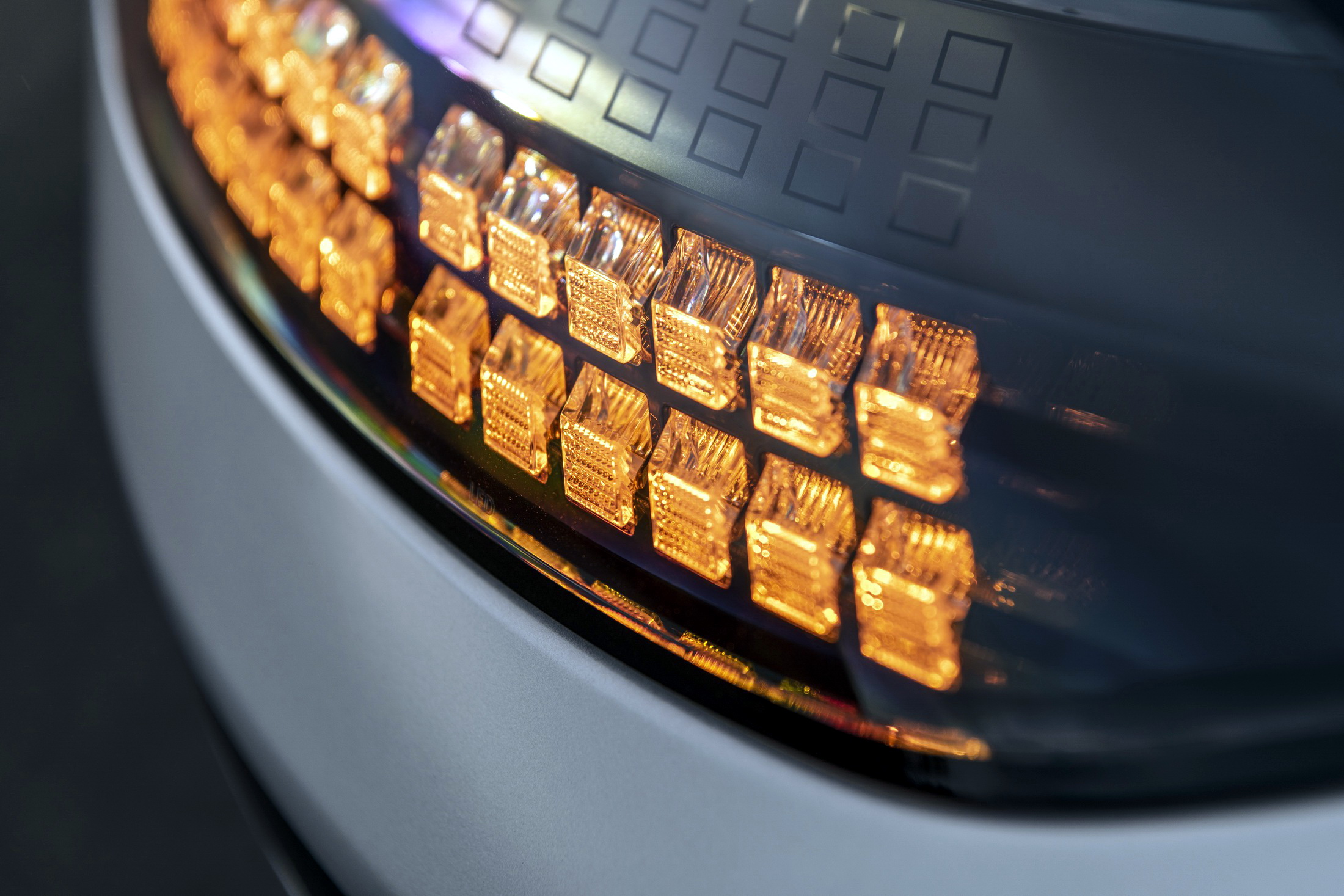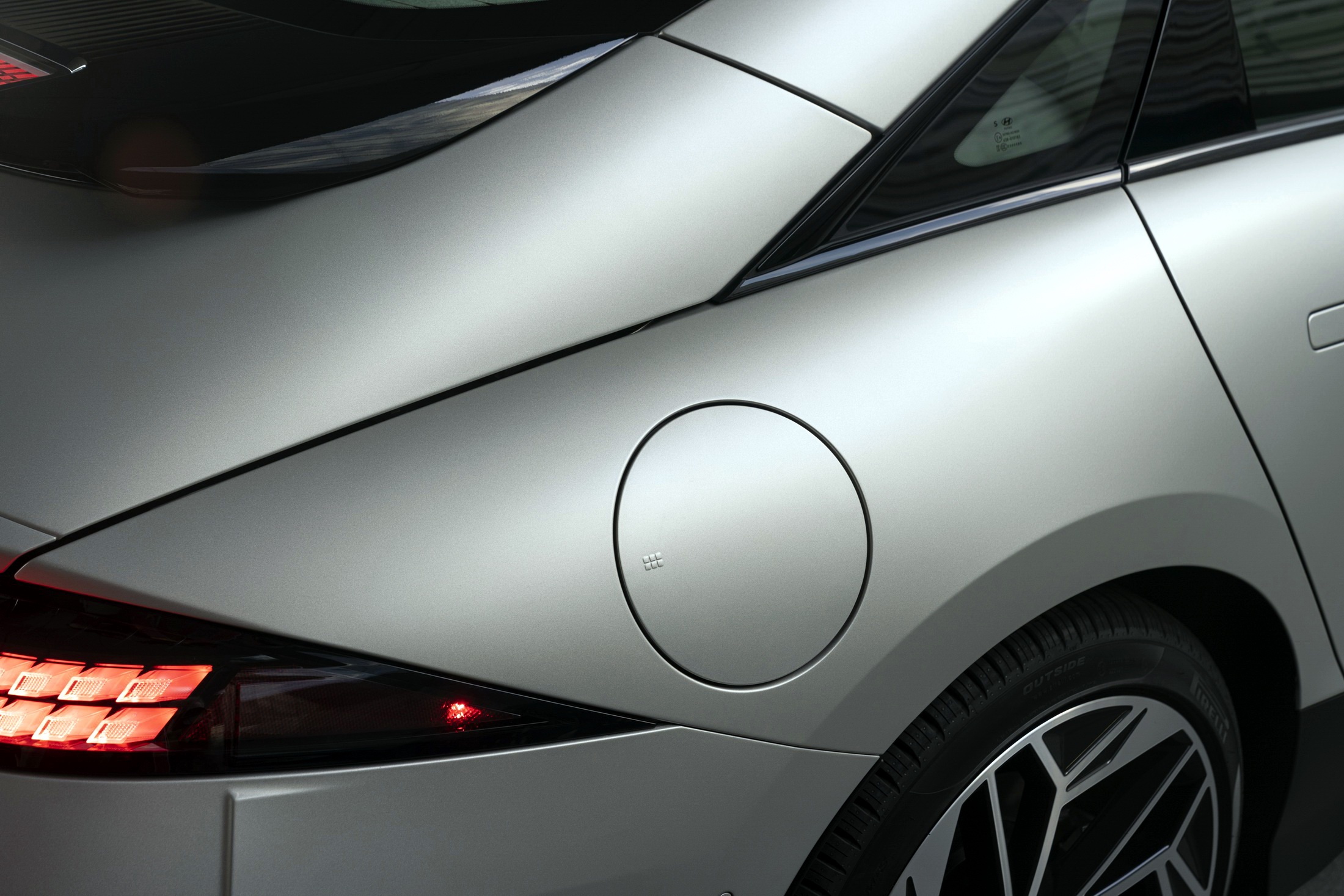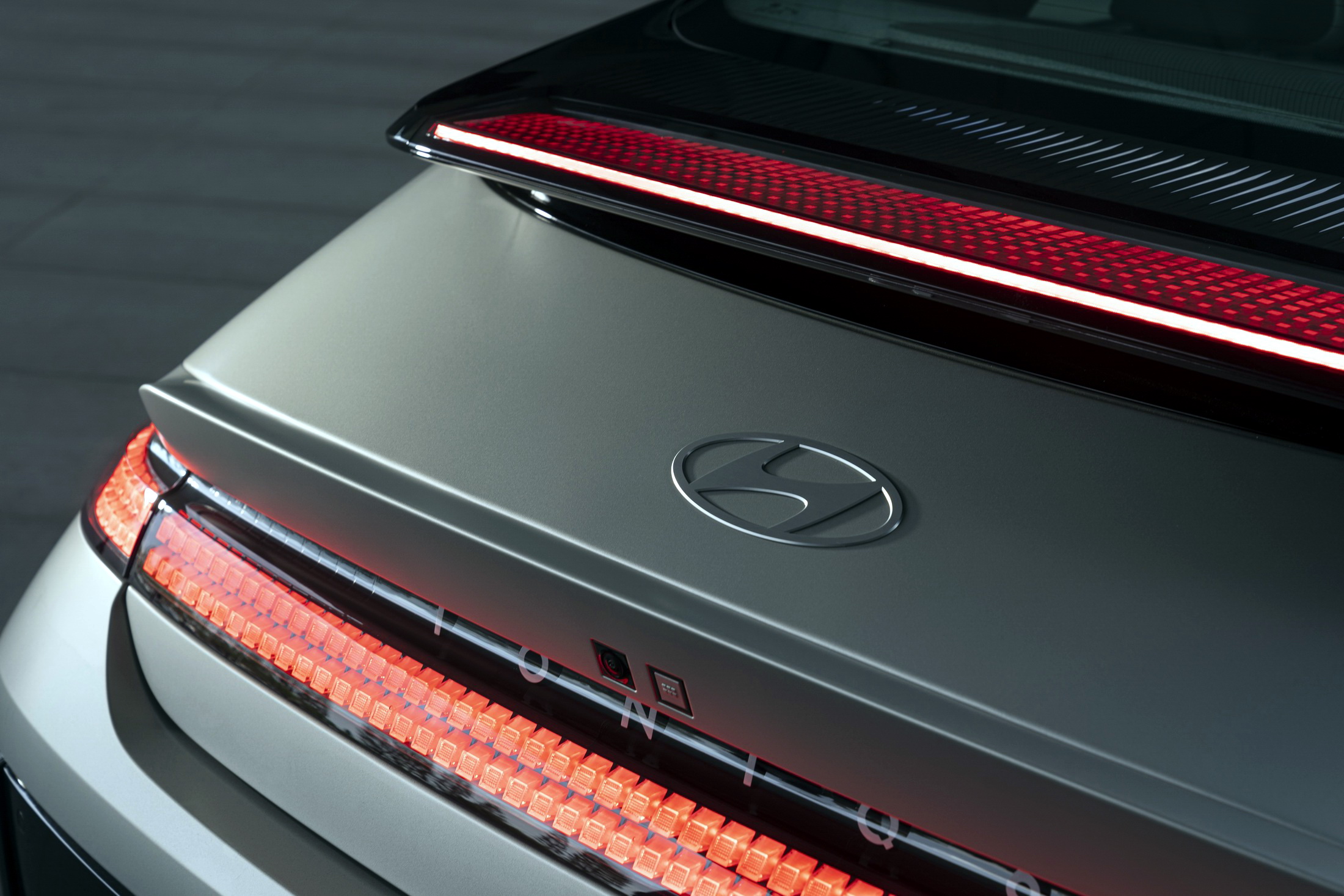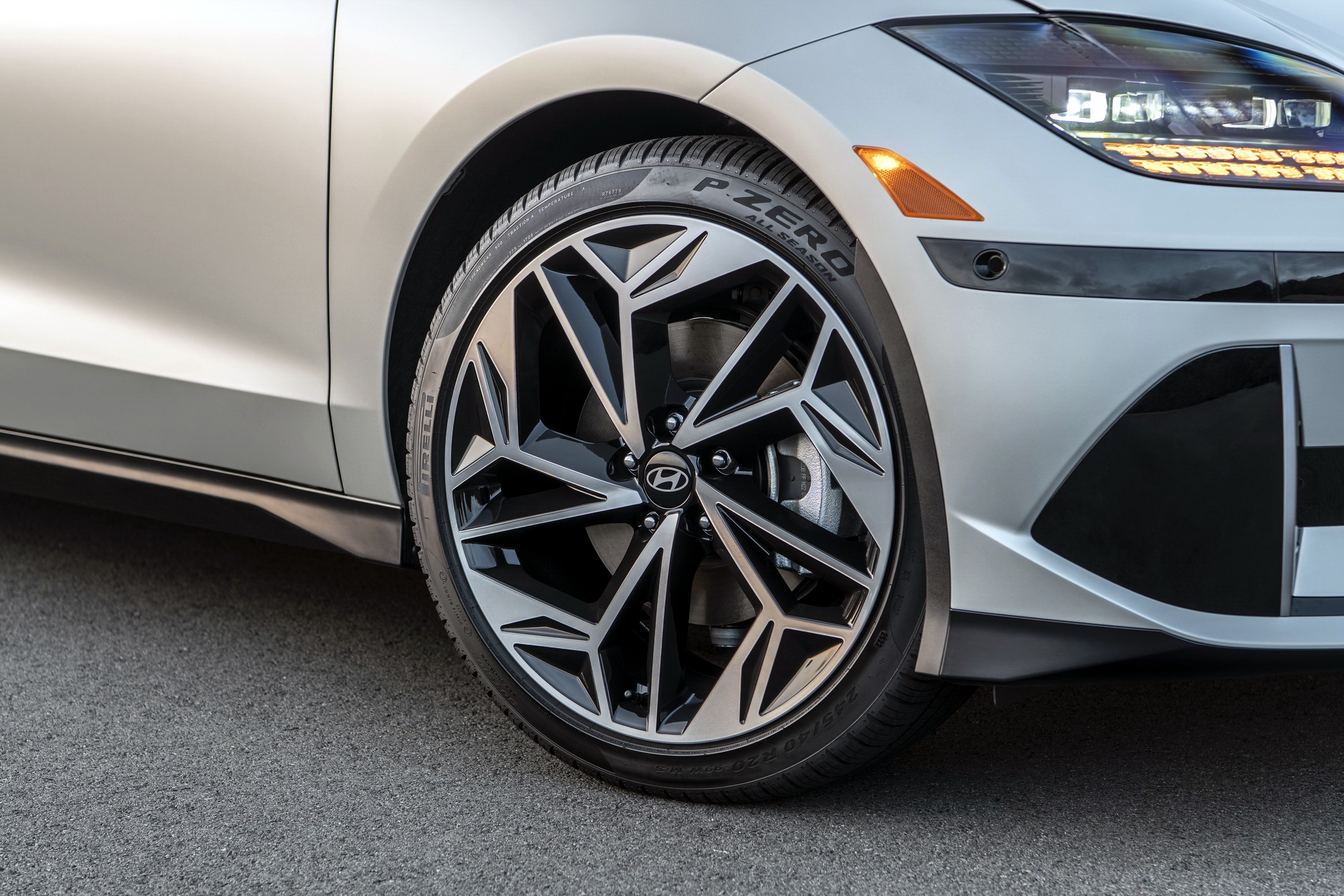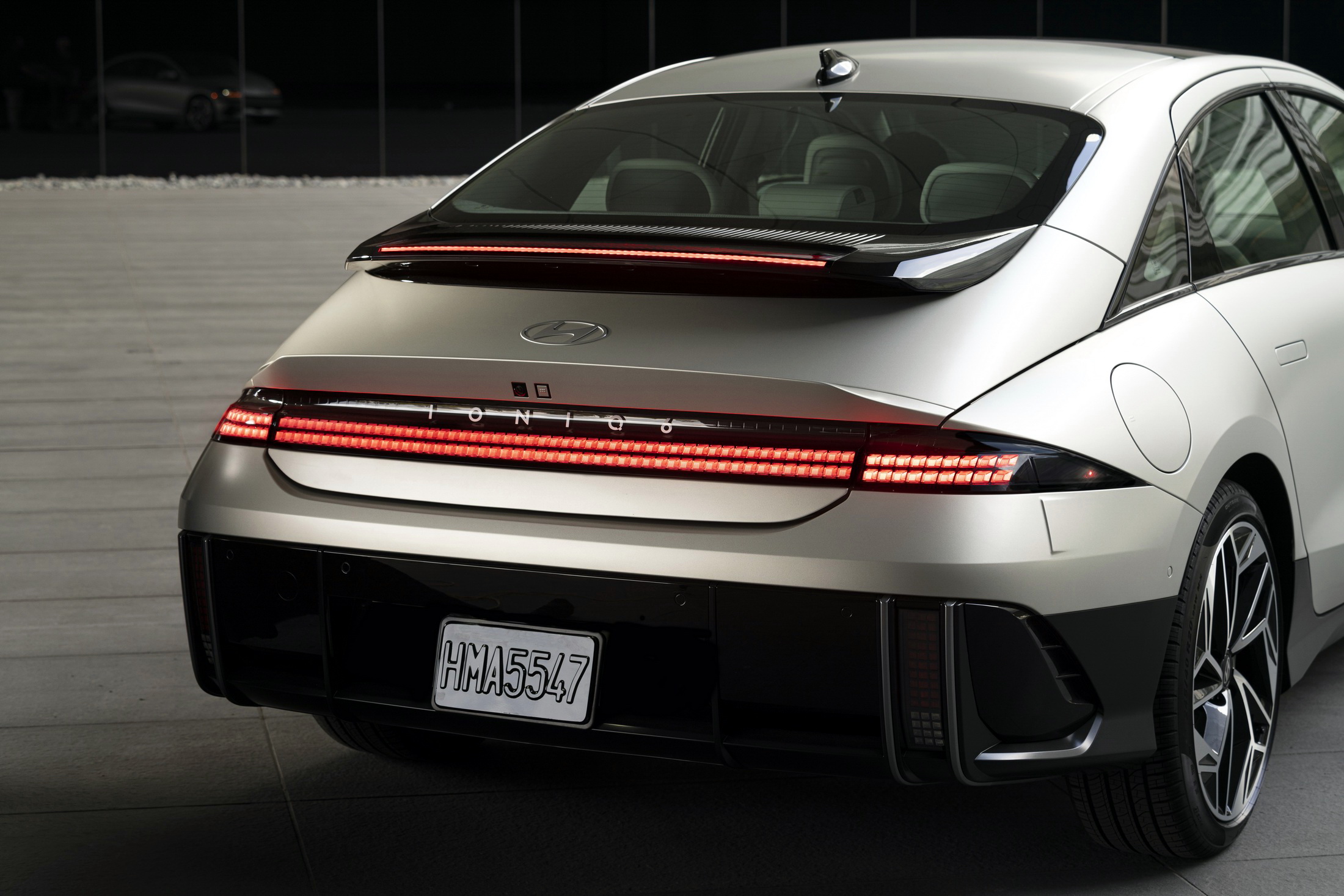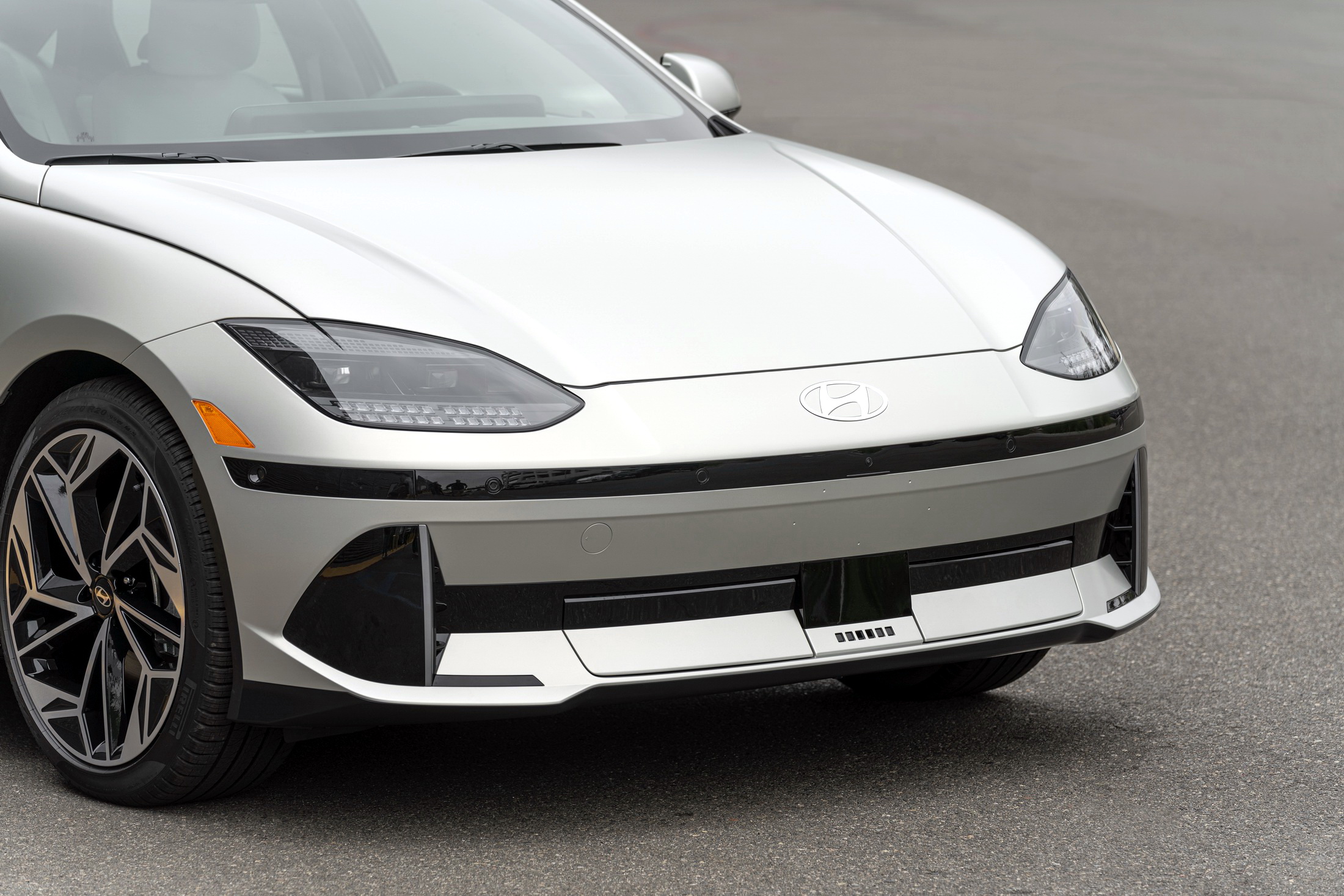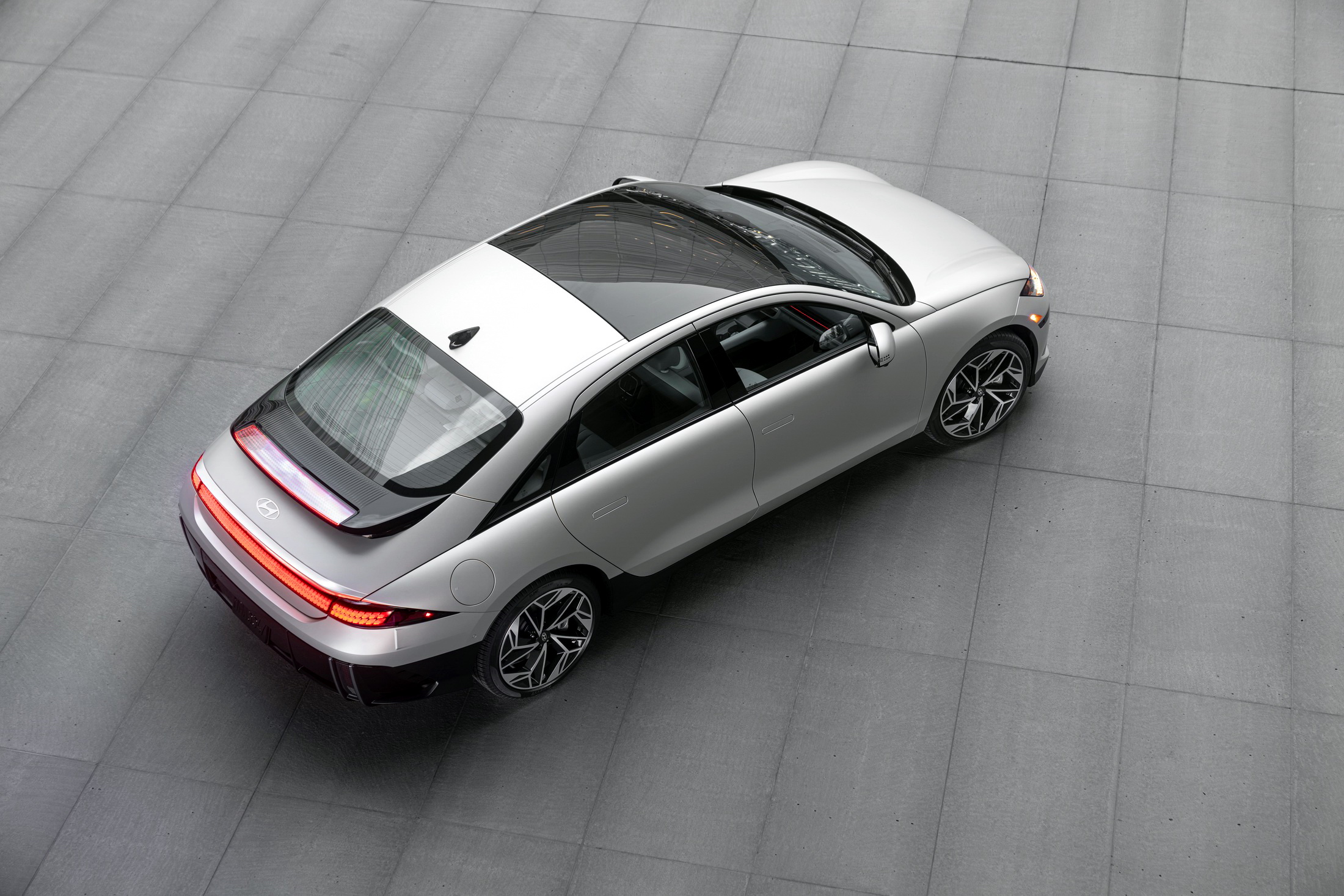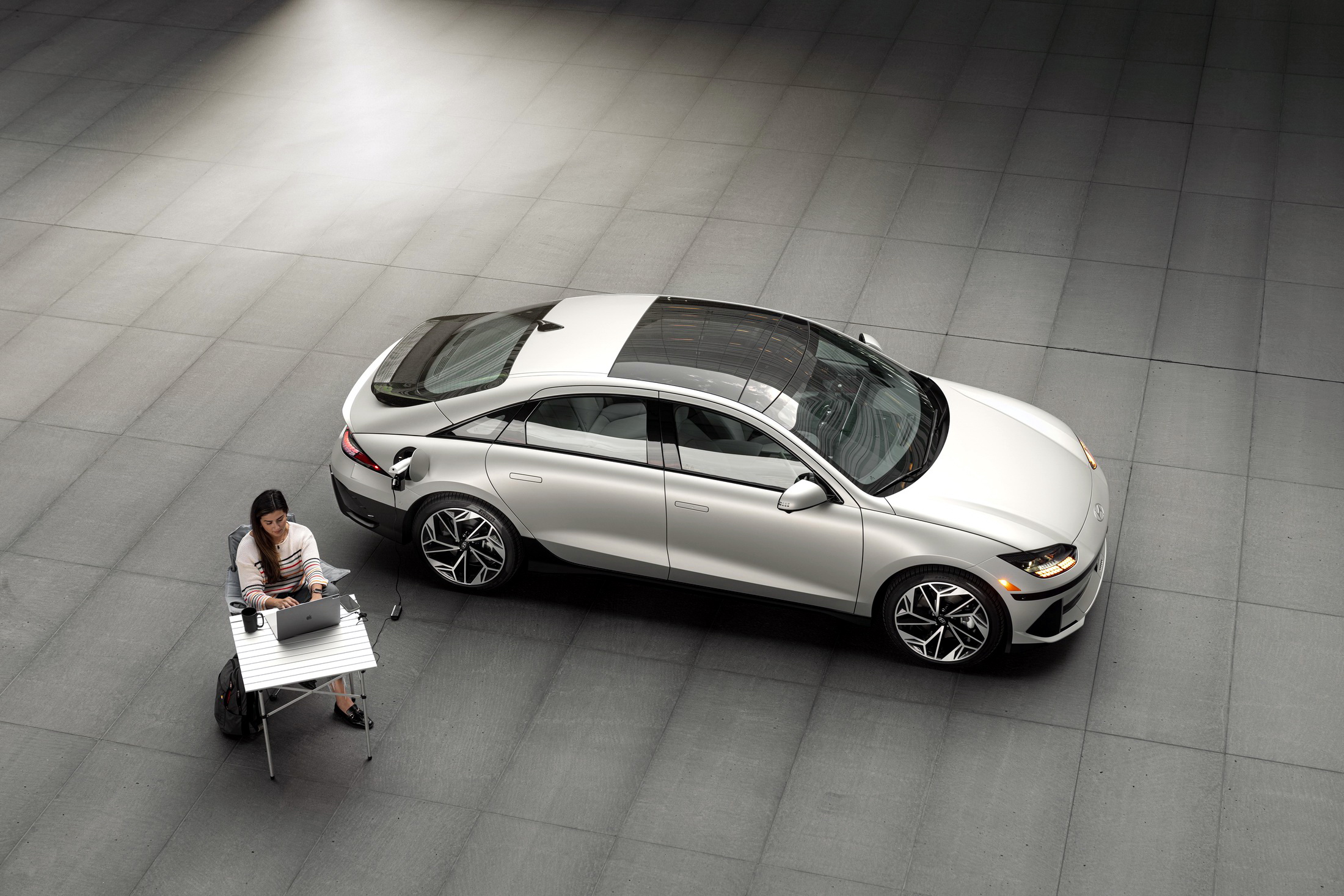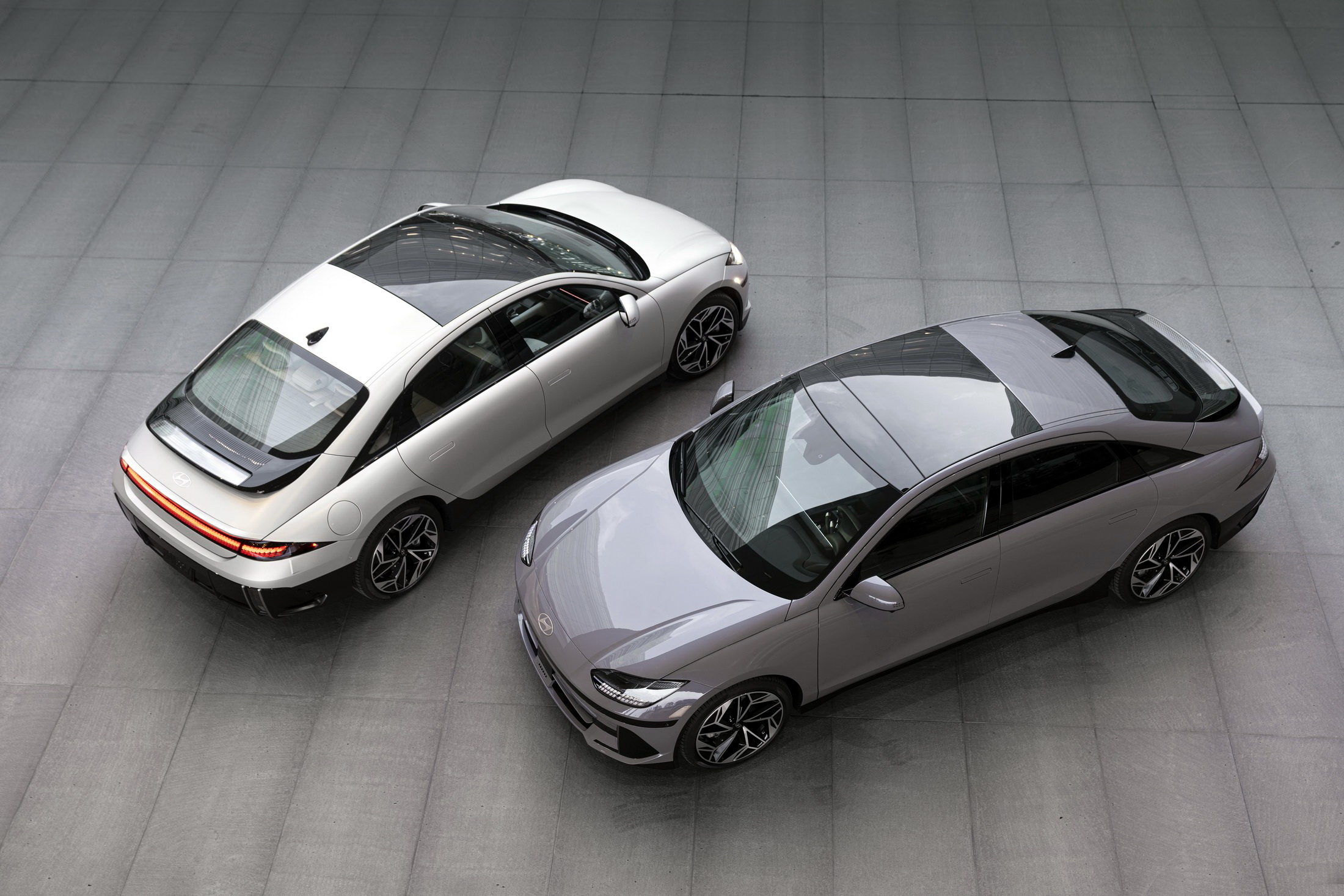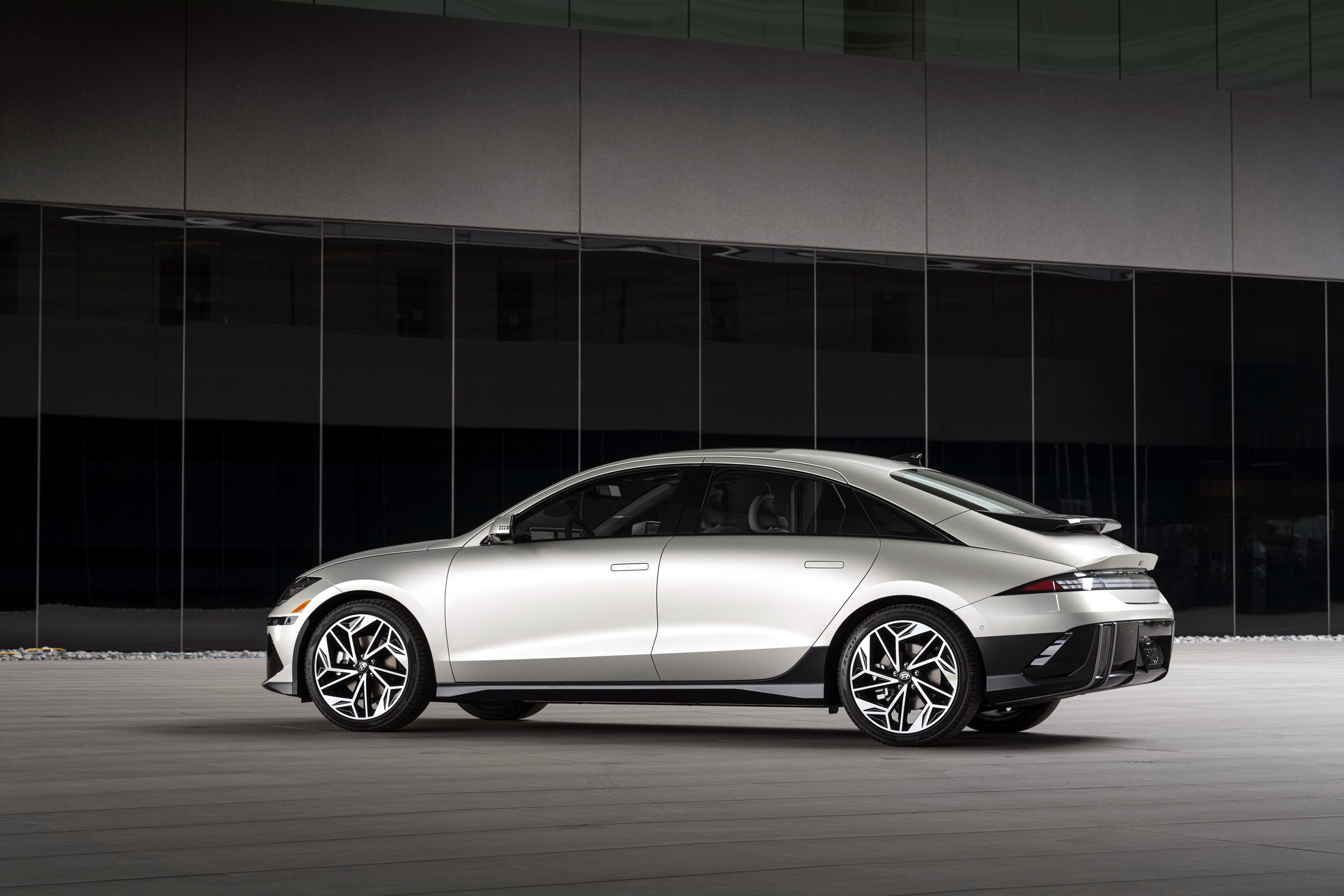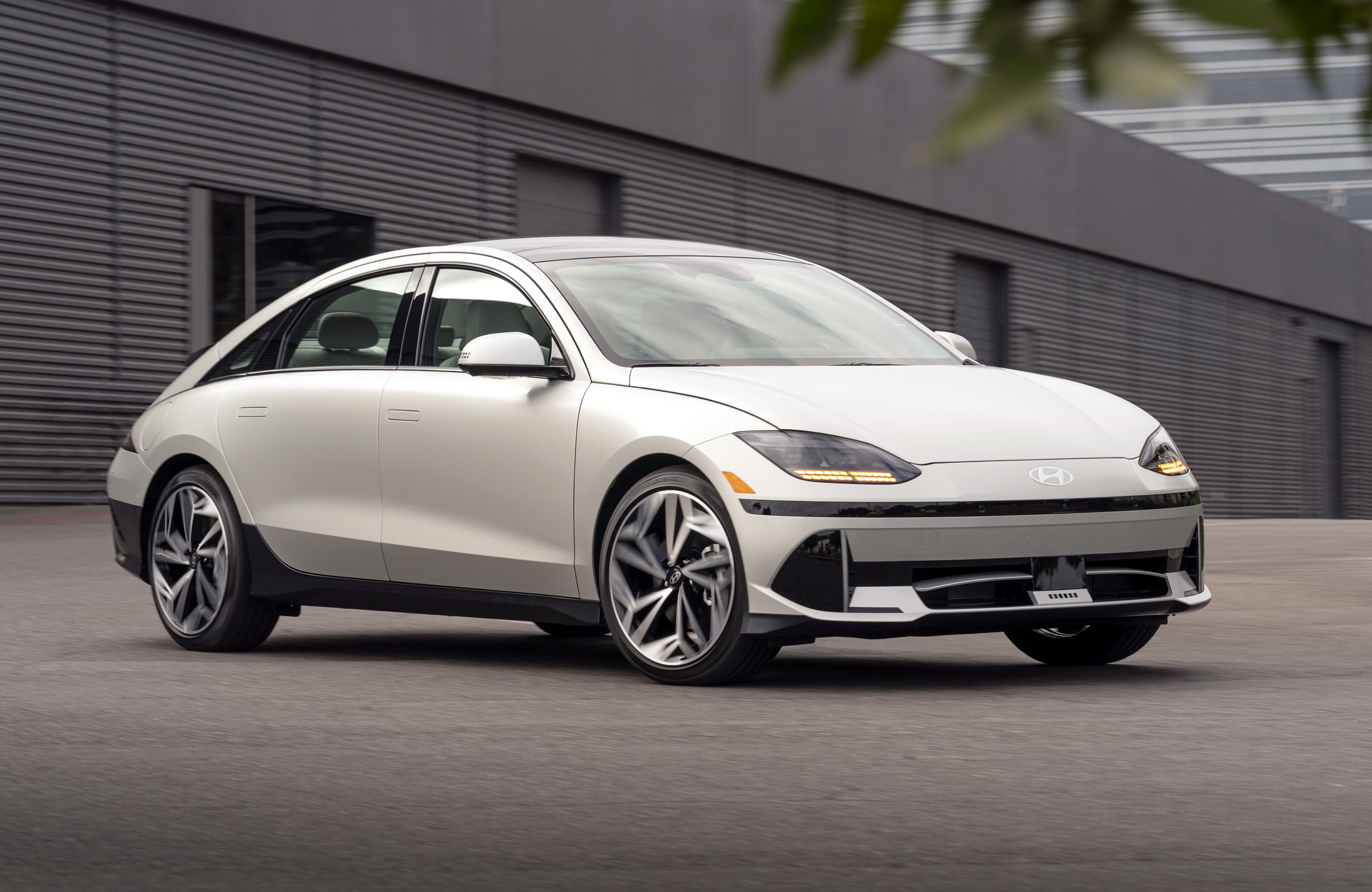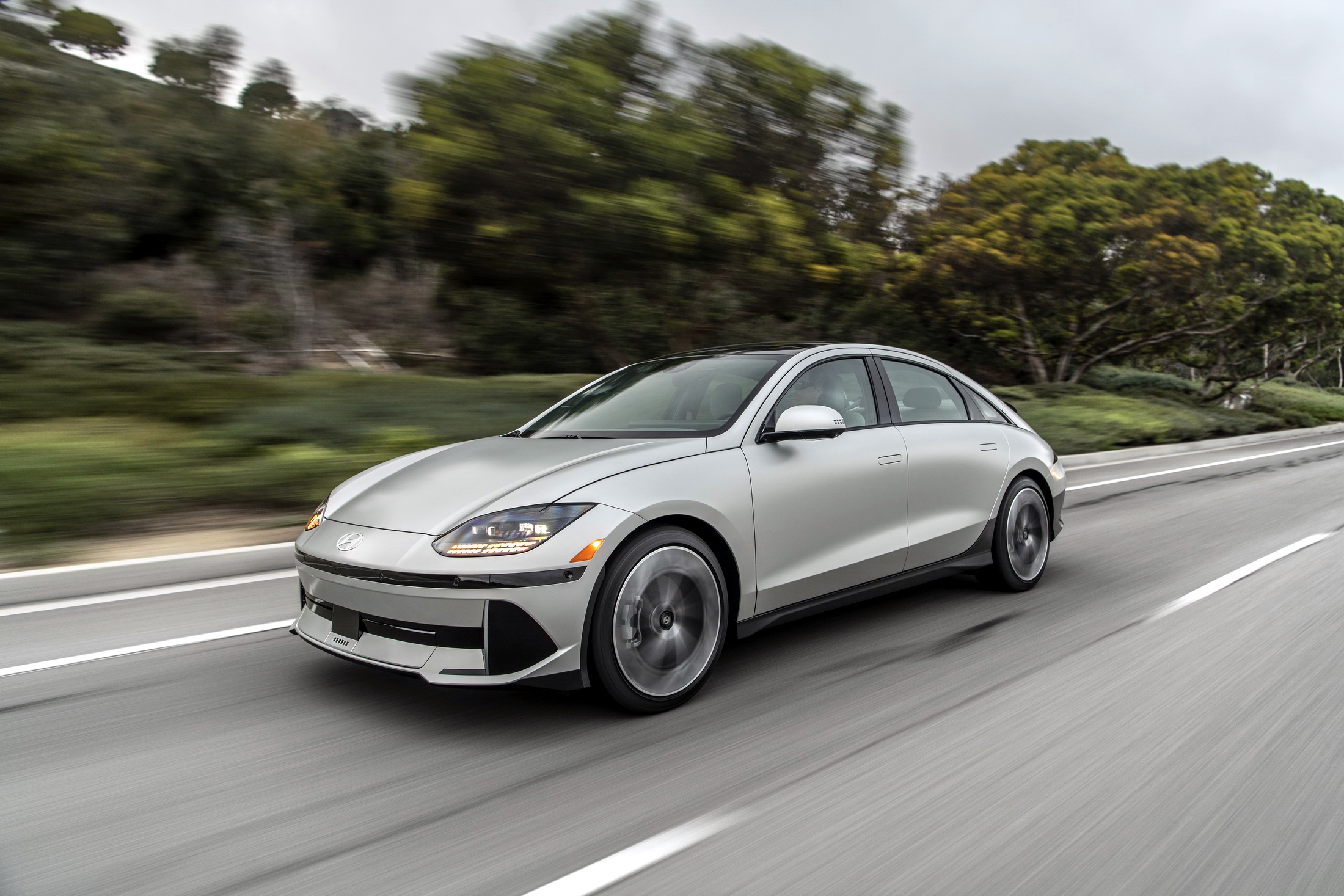Turning heads in the mainstream sedan segment isn’t an easy task but that’s exactly what Hyundai plans on with the 2023 Ioniq 6 that is making its North American premiere today at the LA Auto Show. The new all-electric sedan will start from “mid to mid high $40s range” according to our U.S. sources, offer up to 340 miles of range (mfr est.), and from 149 up to 320 horsepower. From nose to tail, this retro-futuristic ride aims to offer “emotional efficiency” with an approach all its own.
The Ioniq 6 has been waiting in the wings for a while now. Featuring styling originally previewed in Hyundai’s Prophecy Concept from 2020, this sleek and slippery sedan boasts a 0.22 drag coefficient. That puts it among the very best in the business which should make it a hot commodity when it goes on sale in the spring of 2023.
A Familiar Pack That Goes Further
Hyundai will offer the Ioniq 6 with two different battery packs in 2023. The ‘Standard Range’ 53.0 kWh version (480V) is only available as a rear-wheel drive sedan and it develops 149 hp (111 kW) and 258 lb-ft (350 Nm) of torque. The simply-named RWD and AWD versions (697V) will both use a 77.4 kWh battery pack. The rear-wheel drive version makes 225 hp (168 kW).
More: Europe’s Hyundai Ioniq 6 First Edition Sells Out In Under 24 Hours
Stepping up to the top-of-the-line AWD version will net customers 320 hp (239 kW) and 446 lb-ft (605 Nm) of torque. That most powerful powertrain will shuttle the Ioniq 6 from 0-60 mph (96 km/h) in “less than 5 seconds,” says Hyundai. Perhaps that will distract from the fact that the base model will likely need more than 9 seconds to complete that same sprint.
Hyundai hasn’t released detailed pricing or range for any of the Ioniq 6 lineup but we do know a few things. The brand has told Carscoops that the “starting price should be in mid to mid-high 40s range.”
In addition, Hyundai has provided its estimates for the range of Ioniq 6s with the larger battery pack saying that the 77.4 kWh battery RWD version should get somewhere near 340 miles of range while the 77.4 kWh battery AWD model sees that estimate drop down to a total of 310 miles. Every Ioniq 6 supports both 400V and 800V charging. On a 350 kW DC fast charger, Hyundai says that every trim can charge from 10% to 80% in just 18 minutes. If some of those specs sound familiar it’s because the Ioniq 6 shares its E-GMP platform with the Ioniq 5, the Kia EV6, and the upcoming Ioniq 7.
Styling That Punches Above
We’ve seen the Ioniq 6 many times before this reveal and the US market version sees no major changes. Measuring in at 191.1 inches (4,855 mm) long, 74 inches (1,880mm) wide, and 58.9 inches (1,495 mm) tall, the Ioniq 6 is 6.6 inches (167.64 mm) shorter than a Tesla Model S. At the same time, it has a wheelbase that’s 116 inches (2,950 mm) which is just half of an inch shorter than on the Tesla.
To put that more clearly, it means that Ioniq 6 customers will benefit from a spacious cabin. It also means that the overhangs are short which helps the Ioniq 6 cut through the wind and achieve an exceptional 0.22 drag coefficient. Hyundai spent more than 5,000 hours simulating different aerodynamic adjustments on supercomputers to come up with the final body treatment.
It includes reduced wheel arch gaps, a full underbody cover, separation traps on the edges of the rear bumper, active air flaps, and more. Other touches, such as the 700 parametric pixels in the lighting are solely stylistic and tie the 6 to its sibling the Ioniq 5.
Something A Little Different
The inside of the Ioniq 6 is a familiar scene. Much like the Kia EV6 and the Ioniq 5, the inside of this car features a pair of widescreen interfaces, a dual-mode climate/media controller bar, and a central tunnel with an armrest. Where the Ioniq 6 really differentiates itself is in its use of ambient lighting and sustainable materials.
A spectrum of 64 different ambient light colors is available for drivers to choose from. They can also select one of six dual-color themes. These lights will show up throughout the interior and that includes on the steering wheel where the four Interactive Pixel lights can change behavior based on the situation.
Additionally, Hyundai is leaning heavily into the use of sustainable materials in the Ioniq 6. For the first time, the brand is using recycled fishing nets to make the carpet. Recycled Polyethylene Terephthalate (PET) fabric (seats), a bio PET fabric, and a bio-paint derived from vegetable oils make up just a few of the important changes.
A Potential Contender
From what information we’ve gathered it sounds like the Ioniq 6 isn’t making a play at being the least expensive all-electric sedan but success might come despite that. Its bold styling and likable interior are features that consumers might be drawn to. We also appreciate how Hyundai has included a slew of driver safety aids as standard equipment. That list of features includes adaptive cruise control, safe exit warning, collision avoidance assistance, blind-spot monitoring, and more.




